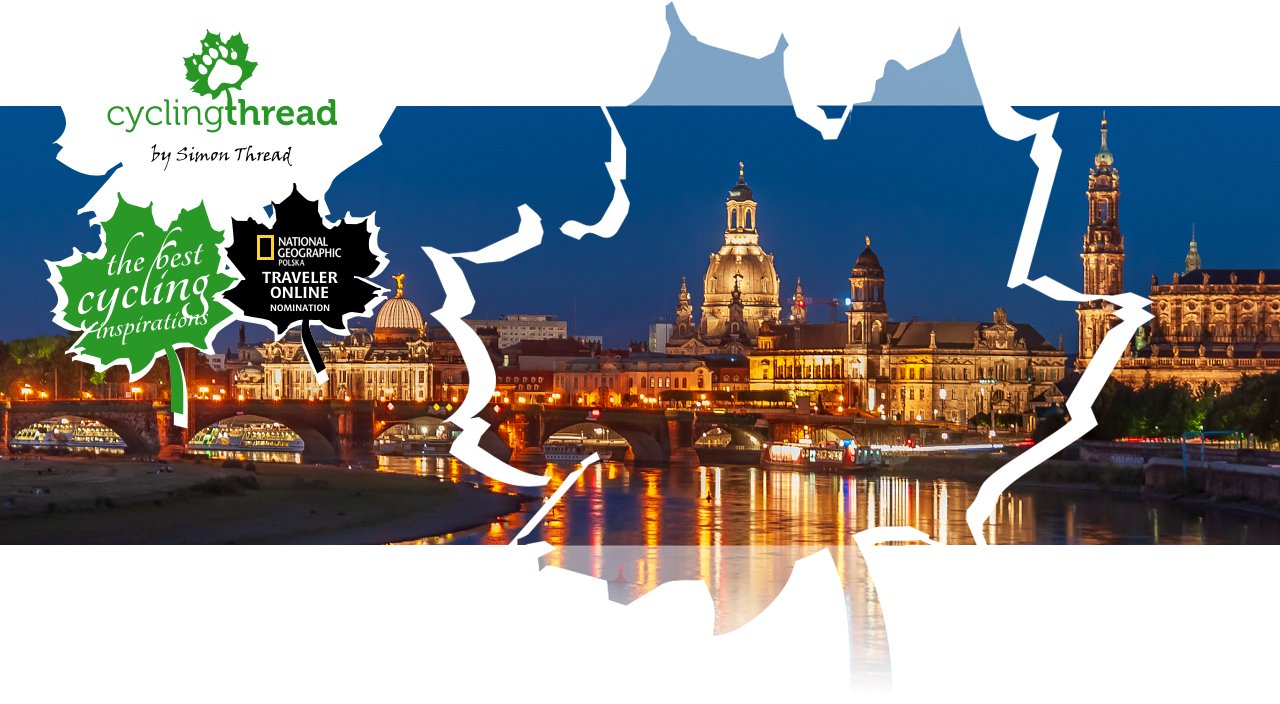
Cycling the Dresden Elbland: vineyards, palaces and the Elbe
This summer was completely different from the previous ones. With our Interrail passes in hand, we set off on a month-long train-and-bike journey across Europe. Our first stop was the remarkable city of Dresden and the Dresden Elbland in Saxony, Germany, which also includes the famous Meissen, the stately Moritzburg, wine-loving Radebeul, beer-famous Radeberg, and the picturesque Pirna. We visited all these places during a cycling trip, discovering a perfect region for a short, interesting, active getaway - close to Poland and easily accessible by affordable public transport.
Route on the map
GPX file (GPS track): cyclingthread.com-saxony-2019.gpx
The Dresden Elbland - table of contents
- Dresden and Saxony with Interrail passes
- Bombing destroyed 90 percent of the city
- A shared Polish-Saxon chapter of history
- Fürstenzug - the Procession of Princes
- Dresden rebuilt with the help of Canaletto
- The extraordinary Zwinger inspired by Versailles
- Frauenkirche - rebuilt Church of Our Lady
- A glass factory for electric cars
- Winnetou and Old Shatterhand were born on the Elbe
- Germany's smallest wine region
- Wackerbarth Palace straight out of a postcard
- In Saxony, it felt like South Tyrol
- Castle Hill and the narrow streets of Meissen
- Meissen porcelain - white gold from the Elbe
- A fairytale water palace in Moritzburg
- A glass of pilsner at the Radeberger brewery
- The best overnight stay in Saxony at Elbe Paradise
- Pirna's darkest chapter
- The Elbe's low water level at Pillnitz Palace
- A Polish sculptor creates extraordinary works...
- ...in a beautiful vineyard in the Elbe Valley
- Cycling routes in the Dresden Elbland
- Military history with a view of Dresden
- Hygiene, transport, and a glimpse of a ruined city
- Some of the most valuable art collections in Europe
- Extraordinary technical heritage in Dresden
- Beautiful posts of the Polish-Saxon postal service
- Dresden as European Capital of Culture 2025?
- How to travel with a bike on the train?
- Next: Austria, South Tyrol, and Friesland
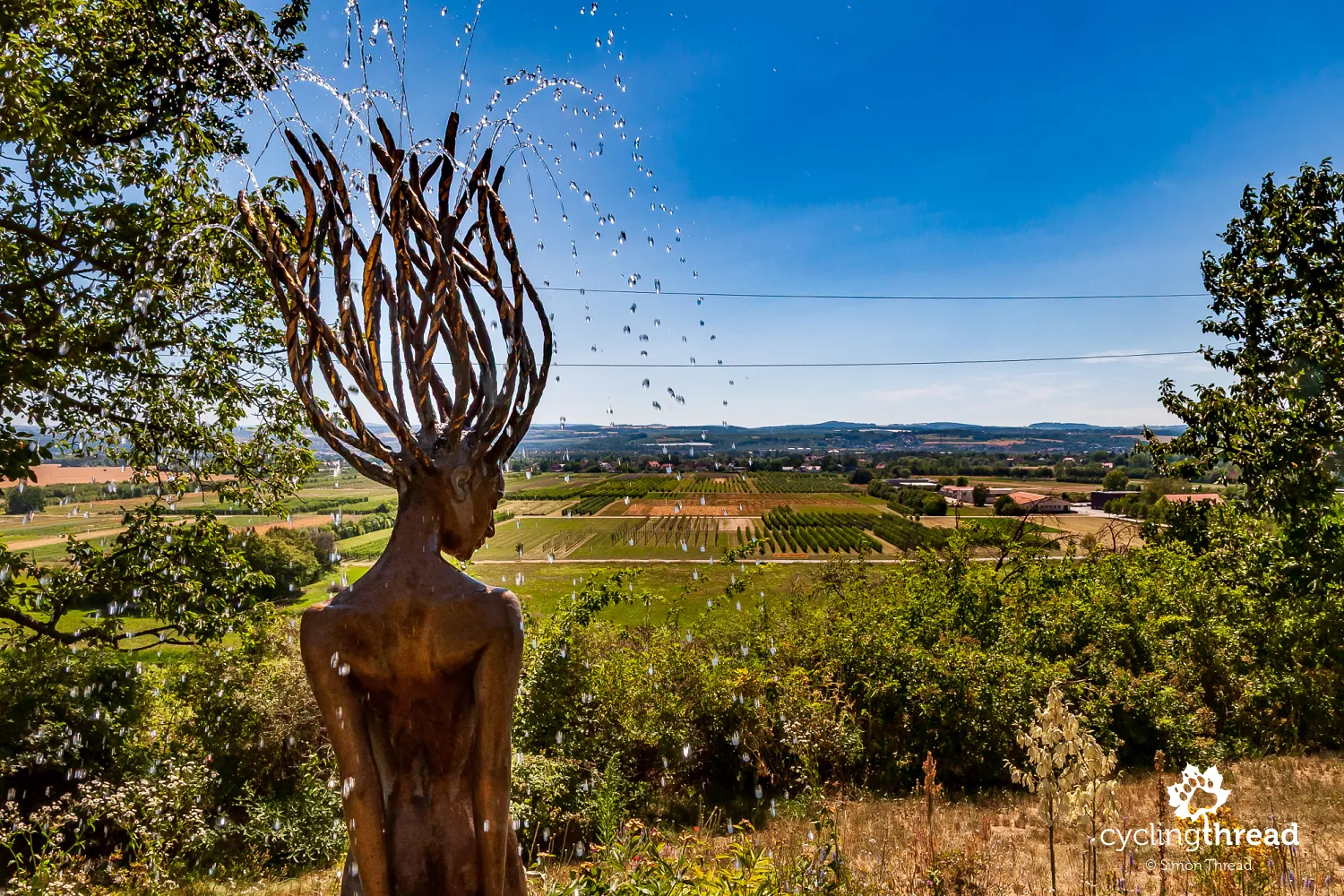
Dresden and Saxony with Interrail passes
Our summer idea with a month-long Interrail pass was simple - to explore as many beautiful cycling routes and regions in Europe as possible. At first, we planned five short multi-day bike tours, leaving time for transfers, rest, and any surprises along the way. The reality of traveling adjusted those plans, and in the end, we completed four of them, relaxing, unwinding, and recharging like never before. Here's the story of the first and truly unique leg of our journey - welcome to Dresden and the Dresden Elbland in Saxony, Germany.
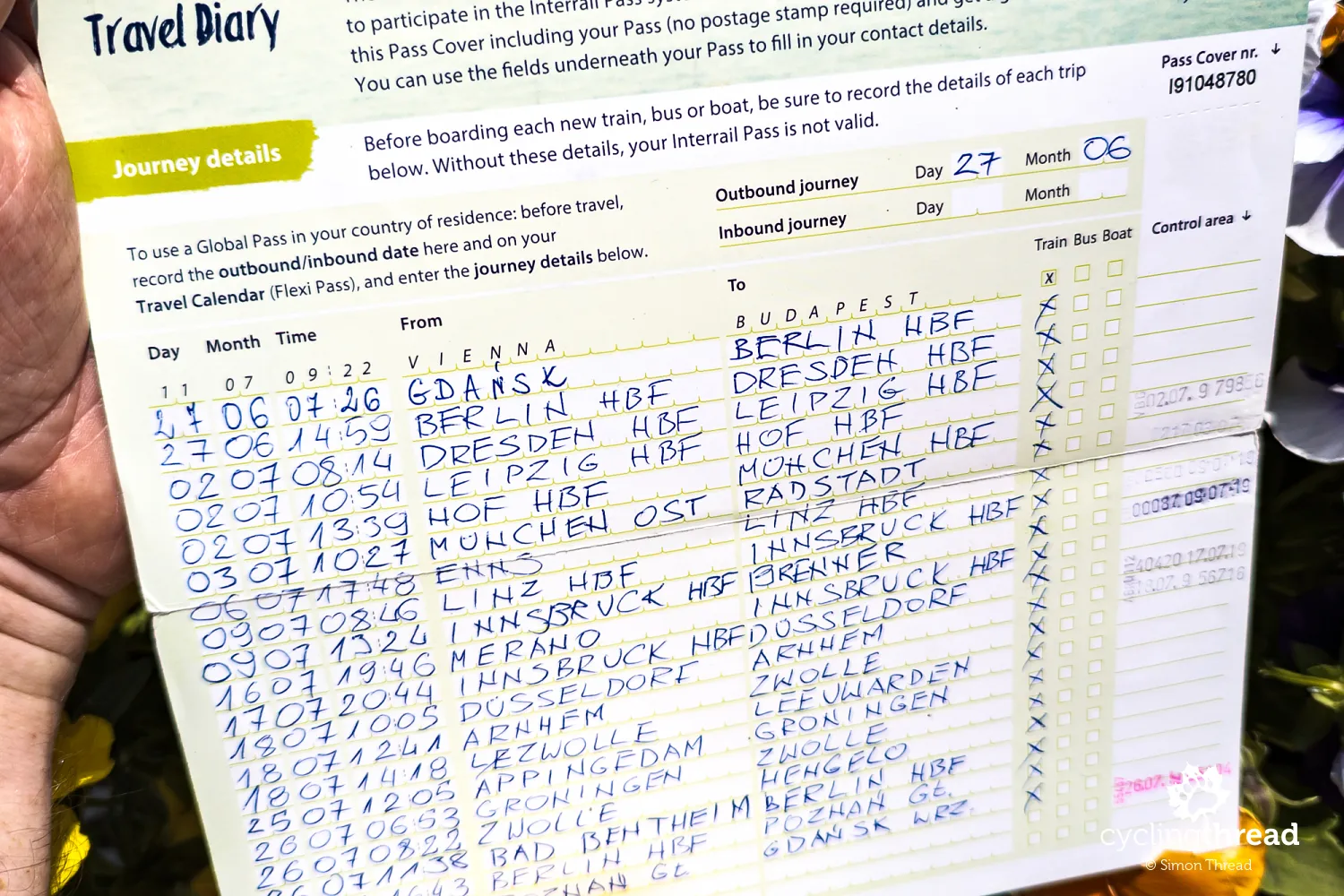
Bombing destroyed 90 percent of the city
Today, Dresden attracts visitors from all over the world with its solemn atmosphere and the sights of its Old Town, which was rebuilt over several decades after the two-day British-American bombing in February 1945. Thousands of explosions, collapsing buildings, a firestorm caused by the sheer intensity of incendiary bombs, and choking smoke killed nearly 25,000 residents of Saxony's capital, destroying over 90% of the city center. The tragedy of the civilian population sparked doubts about the justification of such wartime actions, even among the Allies. The main target of the air raids on Dresden was over 100 identified factories and industrial plants that supported the Nazi war machine and were believed to be located in and around the city. However, some say that the intended civilian casualties were meant to break German morale and hinder the retreat of Nazi troops ahead of the Soviet-Polish offensive from the east.
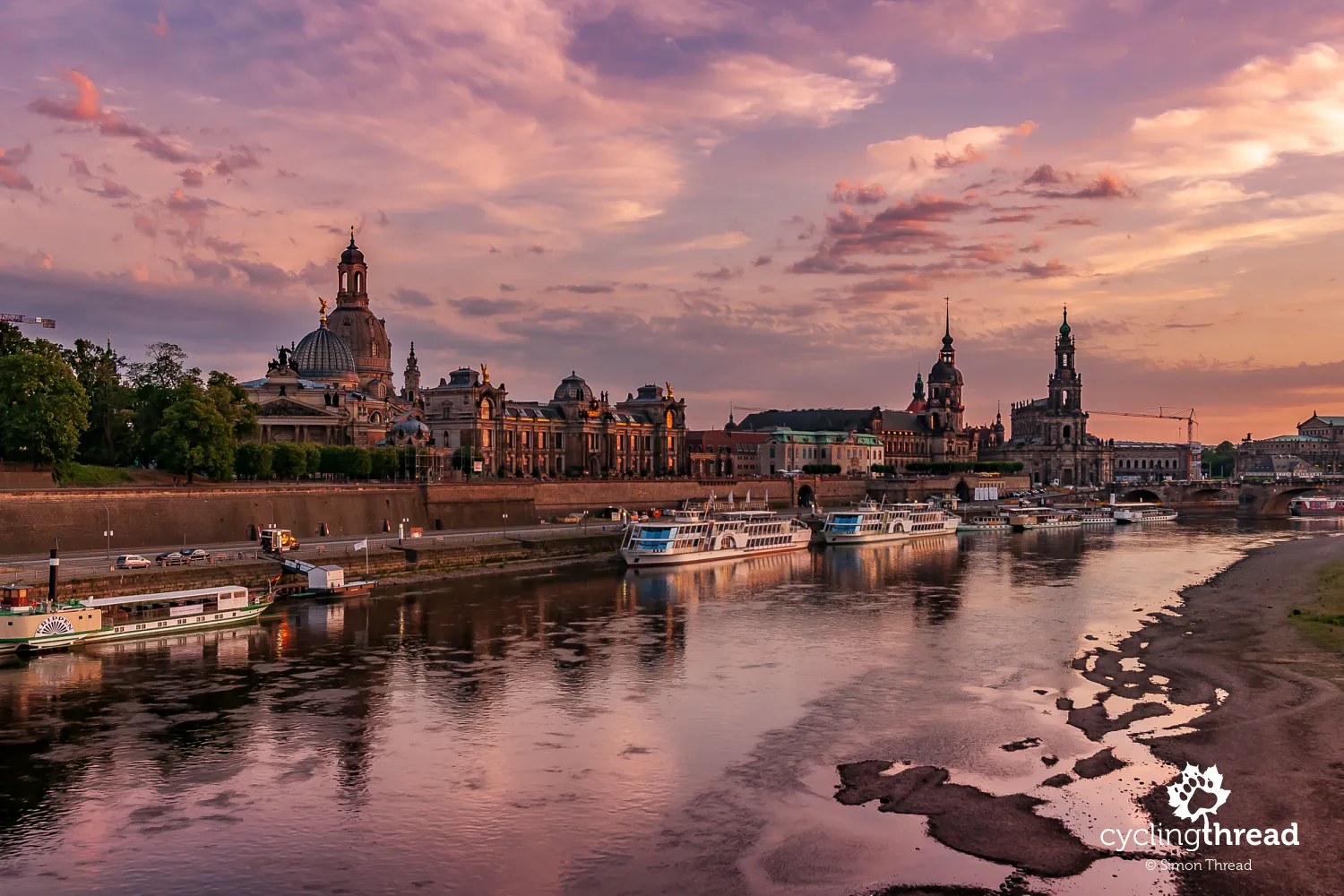
A shared Polish-Saxon chapter of history
Ironically, Dresden - more than most German cities - is a reminder of a shared chapter of Polish-German history, traces of which can still be found throughout Saxony. The most famous figure from that era is of course Augustus II the Strong - ruler of Saxony and King of Poland from 1697 to 1706 and again from 1709 to 1733, who ascended to the Polish throne in a rather unconventional way. The resulting Polish-Saxon union was a unique formation, joining states at very different stages of development. Historians today have varied opinions on the value it brought to Poland and the role played by the Saxon kings. Still, this doesn't diminish the appeal of Dresden and its surroundings for visitors from Poland, who rarely get the chance to admire Polish state symbols in such prominent places across European cities.
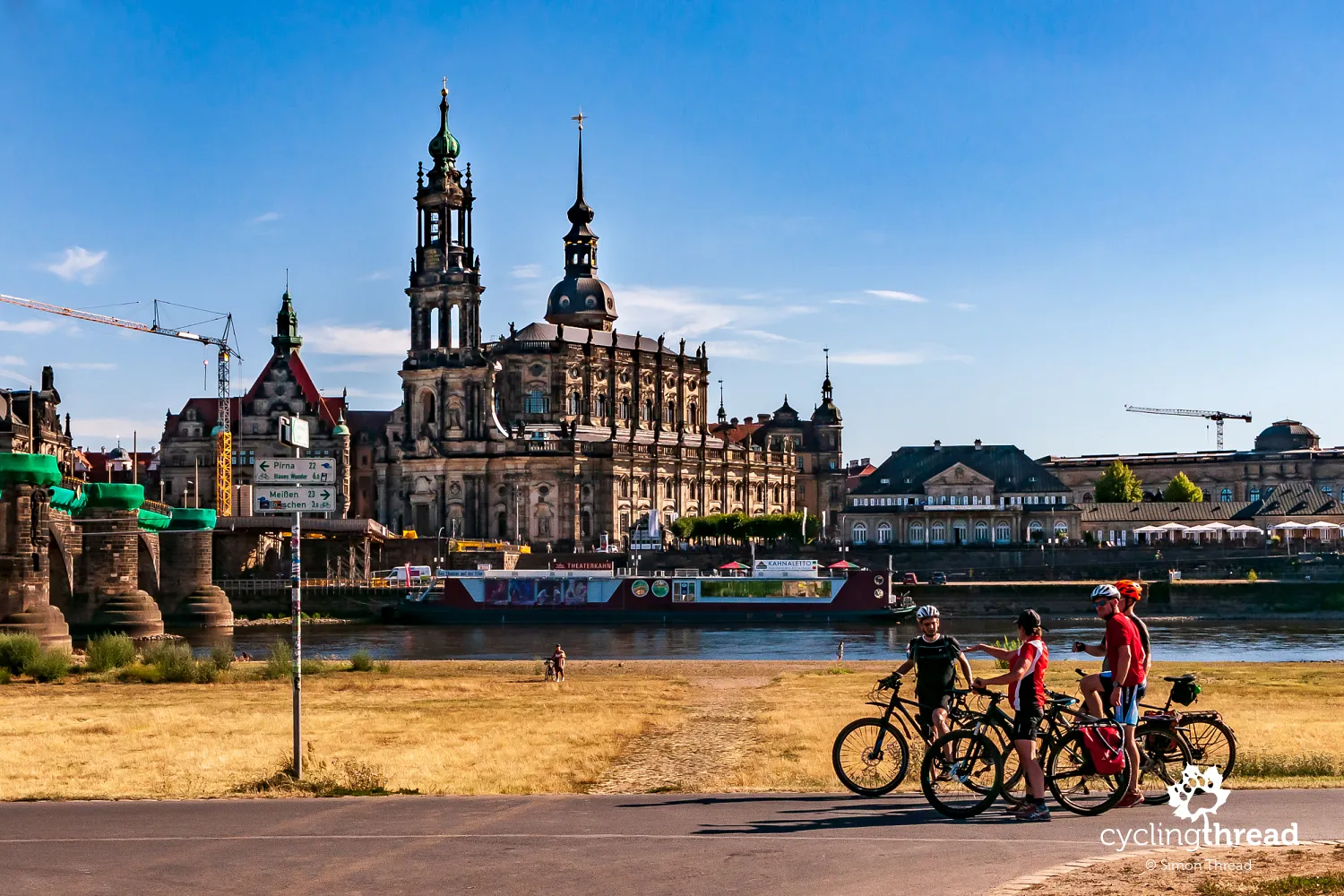
Fürstenzug - the Procession of Princes
One of Dresden’s most iconic landmarks, the Fürstenzug (Procession of Princes), is a stunning mural that stretches over 100 meters along the outer wall of the former royal palace. Made up of around 25,000 Meissen porcelain tiles, it depicts a parade of Saxon rulers from the 12th to the 20th century, including Augustus II the Strong and Augustus III, both of whom also ruled as kings of Poland. Originally created as a sgraffito painting in the late 19th century, the artwork was later transferred to porcelain to better withstand the elements. Amazingly, it survived the bombing of Dresden in 1945 with only minimal damage. Today, the Fürstenzug is considered the world’s largest porcelain artwork and a beautiful reminder of Saxony’s royal heritage. It’s free to view and located in the heart of Dresden’s Old Town, making it a must-see for anyone visiting the city.
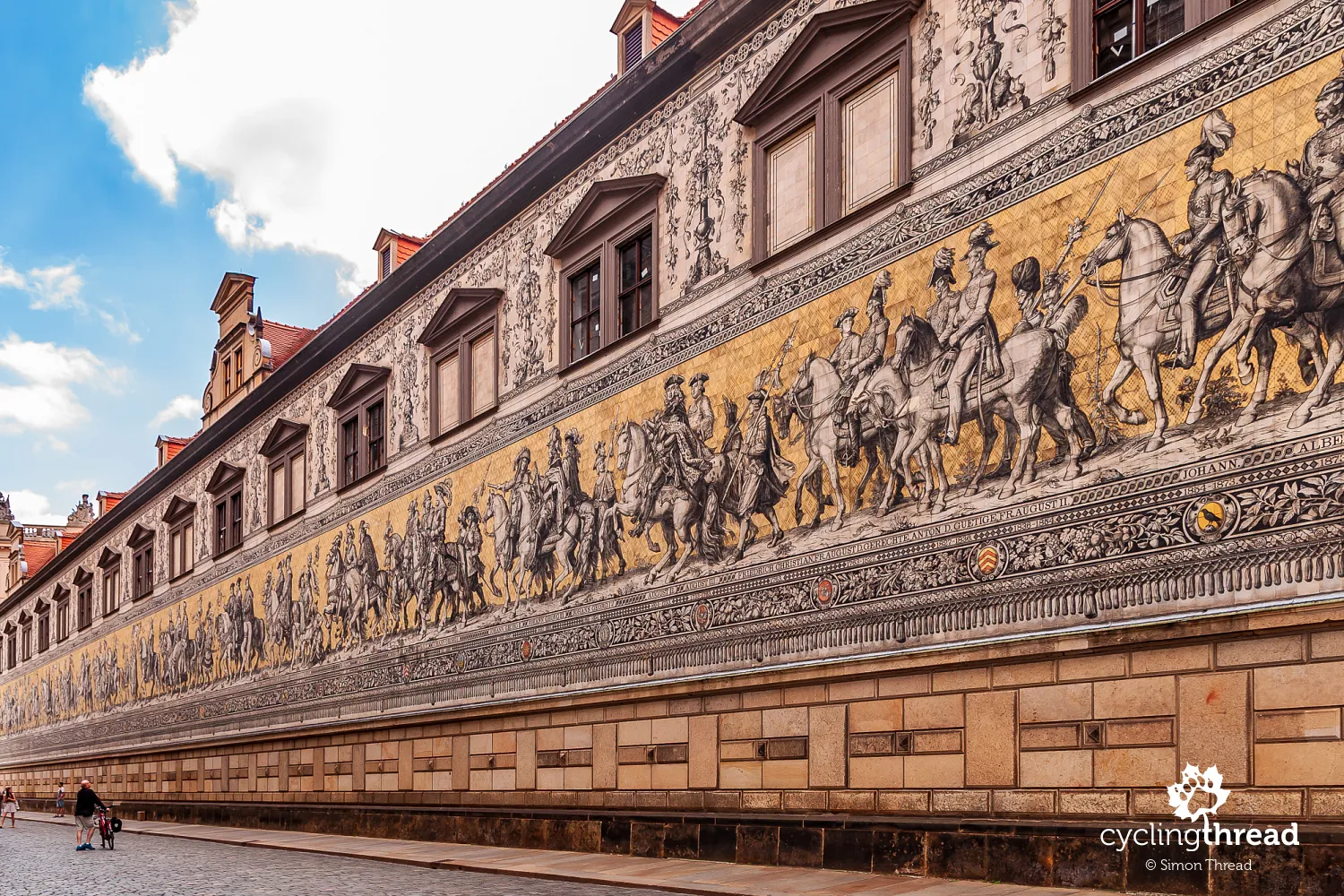
Dresden rebuilt with the help of Canaletto
A key figure in preserving Dresden's cultural heritage was the Italian painter Bernardo Bellotto, better known as Canaletto. He left behind numerous vedute, or cityscapes, depicting scenes from Saxony, and thanks to the extraordinary attention to detail in his paintings, many war-damaged buildings could later be rebuilt. He used a simple device to help him replicate architectural elements with such accuracy - a camera obscura, an early forerunner of the modern camera. Today, in addition to Canaletto's paintings displayed in Dresden's art collections, there is a large empty picture frame on the right bank of the Elbe - inviting anyone to step into the artist's shoes and take in the same Dresden panorama Canaletto painted from this very spot in the 18th century.
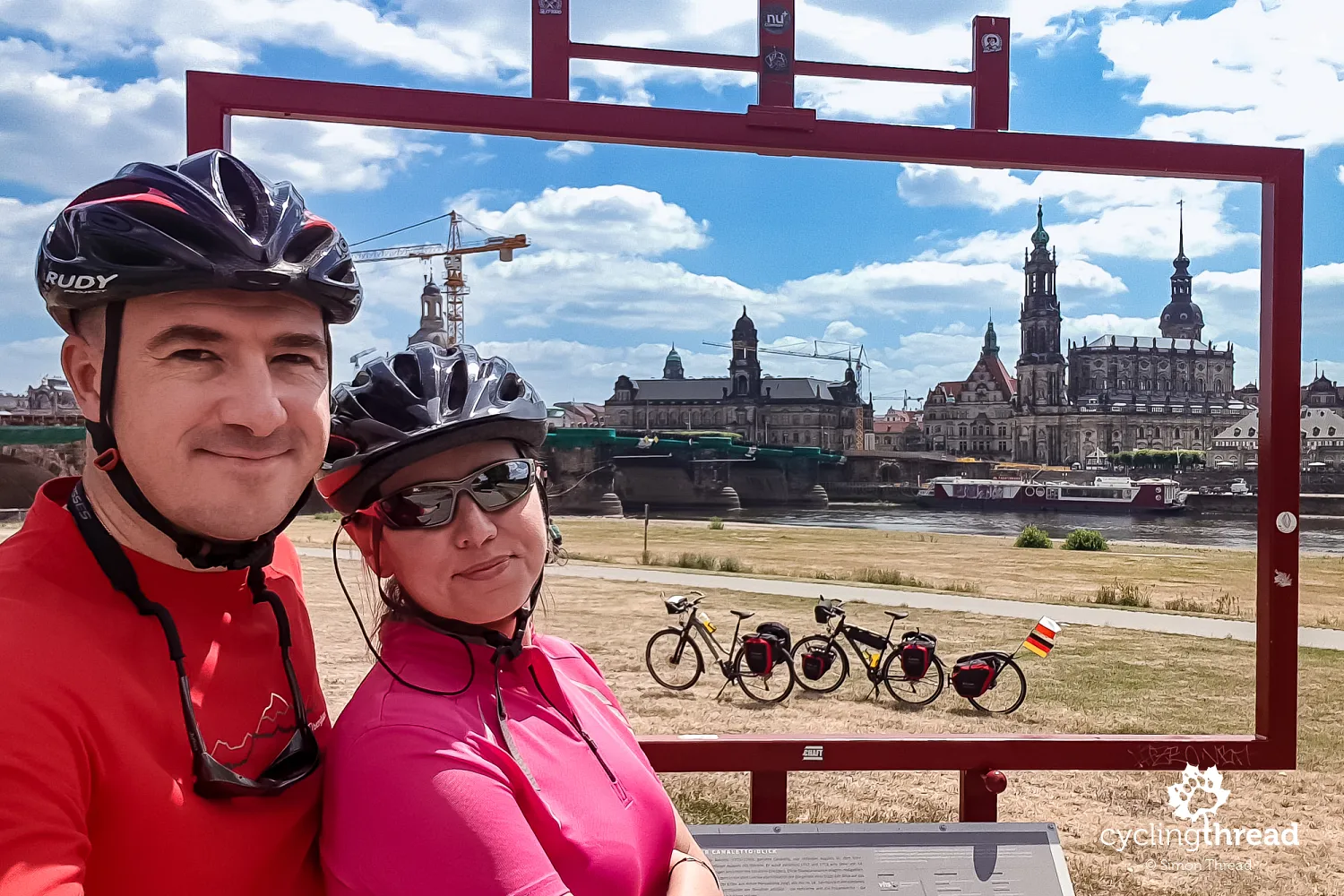
The extraordinary Zwinger inspired by Versailles
The Zwinger palace is without a doubt one of the most precious and stunning places in Dresden - and one of the most remarkable Baroque complexes in Europe. The Zwinger is a lavish ensemble of buildings commissioned by Augustus II the Strong, who was inspired by the French palace of Versailles and wanted to have a similar structure in Saxony. Today, the historic buildings house a range of collections - porcelain, historical clocks, globes, astronomical instruments, and the Gallery of Old Masters. During our visit, a large white dome was erected in the central courtyard - a tent hosting a multimedia exhibition about the Zwinger. In our opinion, it interfered a bit too much with the atmosphere of the place and made it difficult to take photos of this beautiful site.
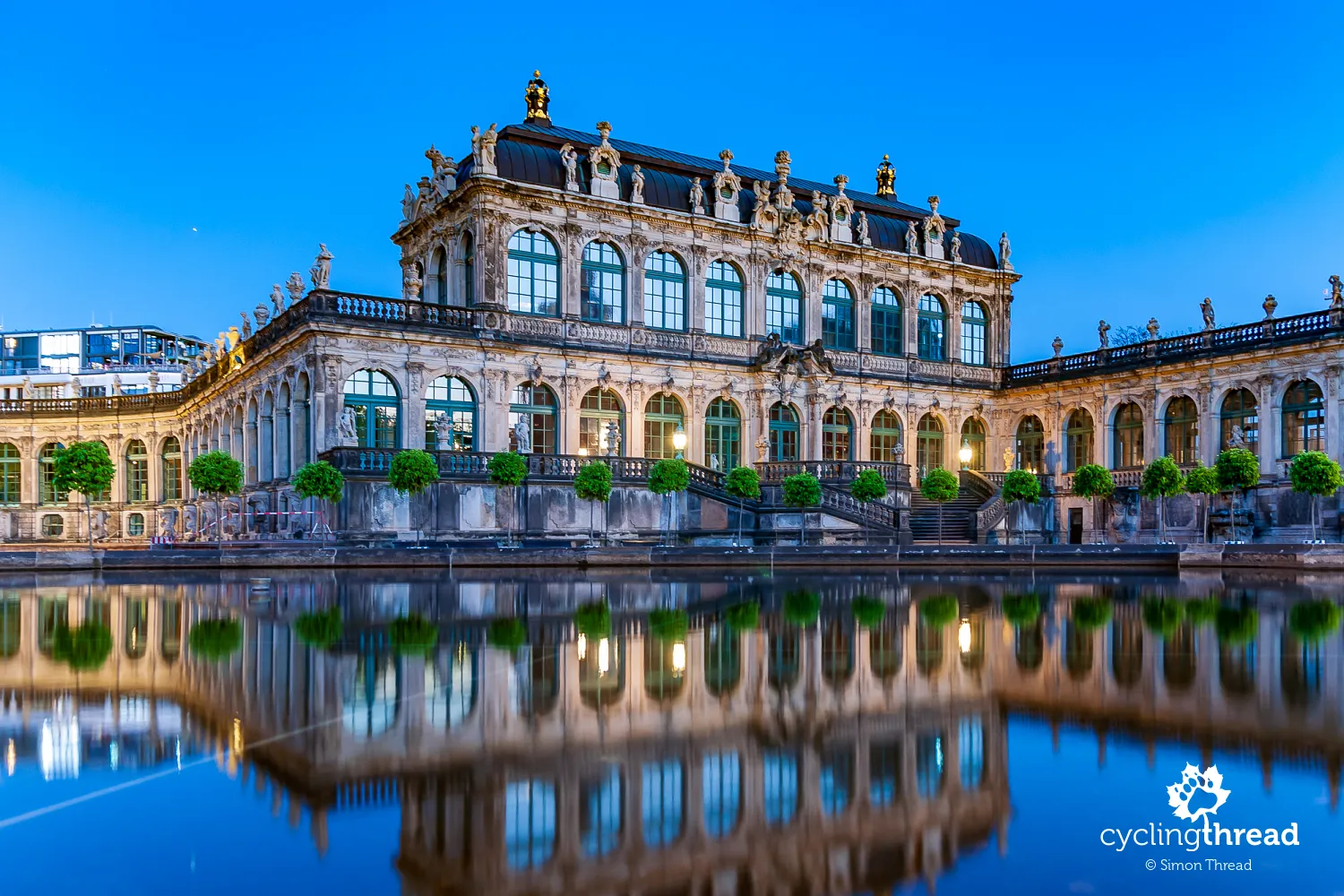
Frauenkirche - rebuilt Church of Our Lady
A must-see on any trip to Saxony is undoubtedly the Church of Our Lady in Dresden - the huge and distinctive Frauenkirche standing on Neumarkt Square. It's hard to believe, but as recently as the early 1990s - less than thirty years ago - this spot was occupied by the ruins left by the wartime bombings of Dresden. Only after Germany's reunification did the decision come to rebuild it over ten years. Since 2004, the Frauenkirche has had a new life, and its mix of light and dark stones clearly shows which parts are original and which were added with modern materials. Dresden is once again proud to claim the Frauenkirche as the largest sandstone building in the world, alongside the cathedral in Strasbourg.
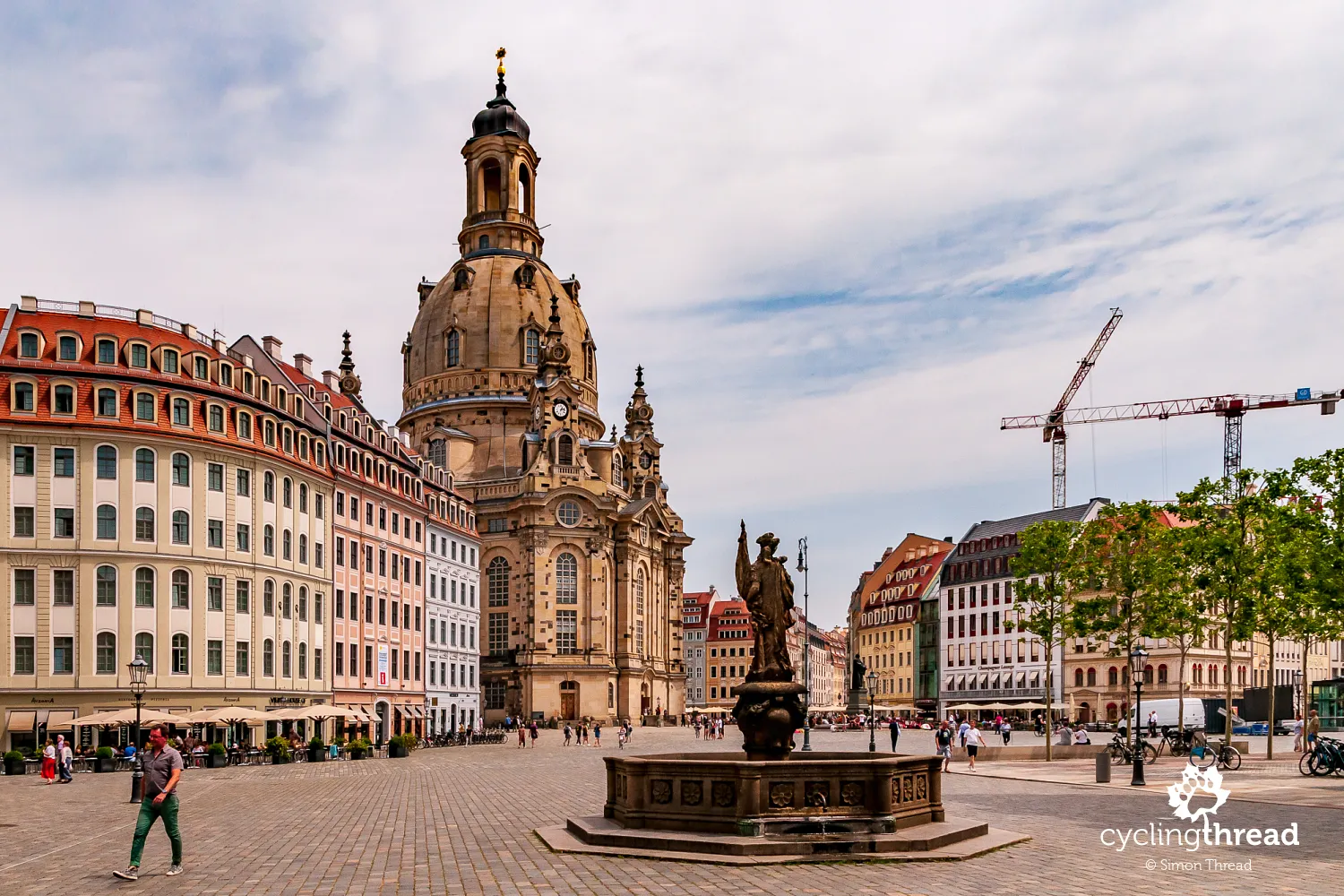
A glass factory for electric cars
But Dresden isn't only about stunning historical landmarks. It's also a window into a gleaming modern future - thanks to Volkswagen's remarkable transparent factory. Every day, 74 units of the electric version of the brand's most popular model - the Golf - roll off the production line at the Gläserne Manufaktur, where visitors can observe the work of the plant through its glass walls. Previously, this unique Saxon factory produced the Phaeton model and Bentleys - now part of the Volkswagen Group. Guided tours of e-Golf production are available in several languages, with all dates listed on the official website of VW's Transparent Factory.
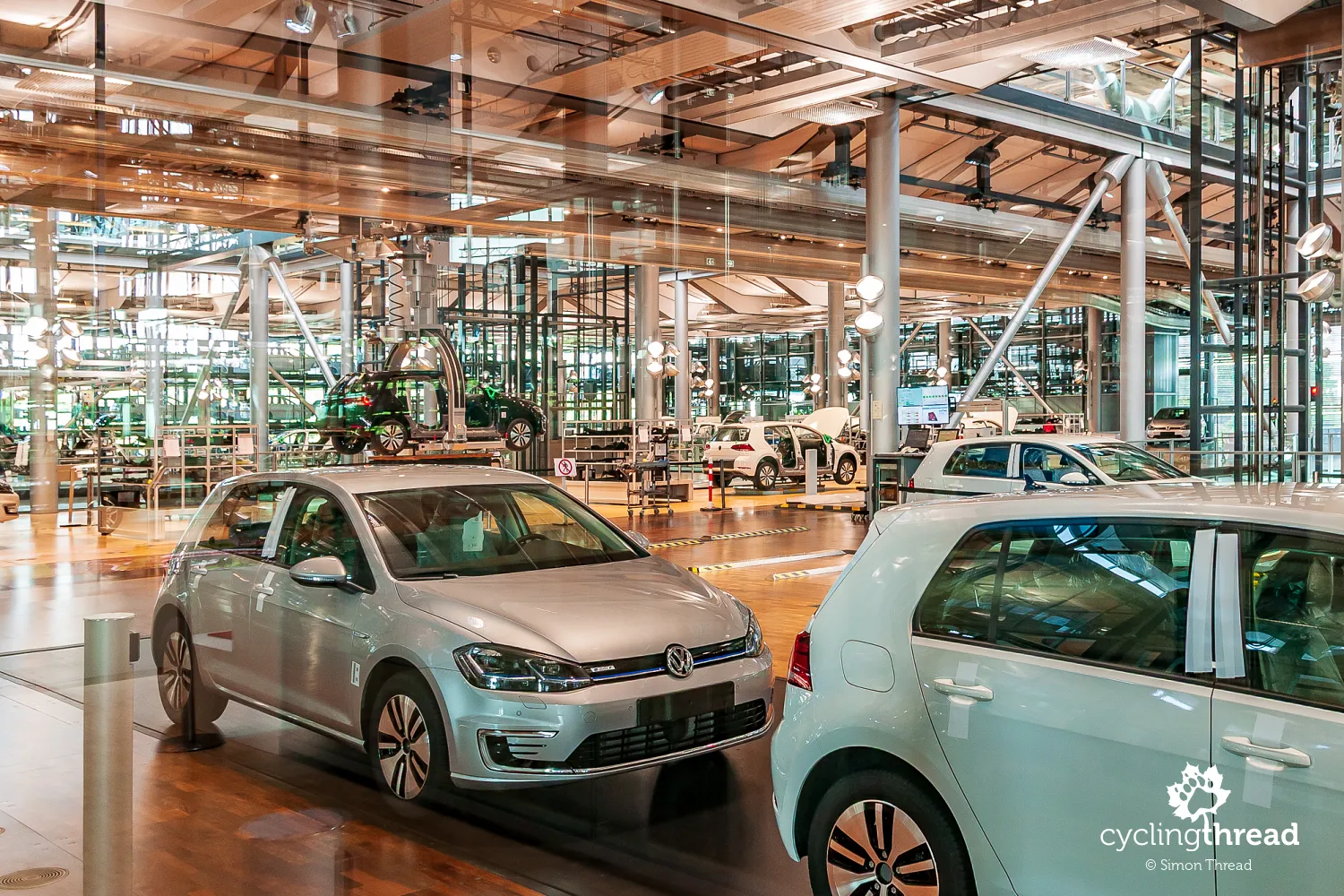
Winnetou and Old Shatterhand were born on the Elbe
That was enough excitement for the first part of our Dresden exploration - we'd return in three days. We hopped on our bikes, left Dresden behind, and headed upriver along the Elbe to explore more of Saxony's highlights. Our first stop was the Karl May Museum in Radebeul, dedicated to the German novelist and, most importantly, the “godfather” of Winnetou and Old Shatterhand! The exhibition, divided between two buildings, tells the story of the author's life and travels, as well as of the Native Americans who became the main heroes of his novels. Standing in front of May's desk, I couldn't help but smile, thinking how here, in the small town of Radebeul near Dresden, the adventures were born that shaped the imagination and emotions of boys like me - today's forty-somethings. I remembered how I'd wait for the next plain-looking A4 booklet, always filled with the thrilling adventures of Winnetou and Old Shatterhand... Ah! :-)
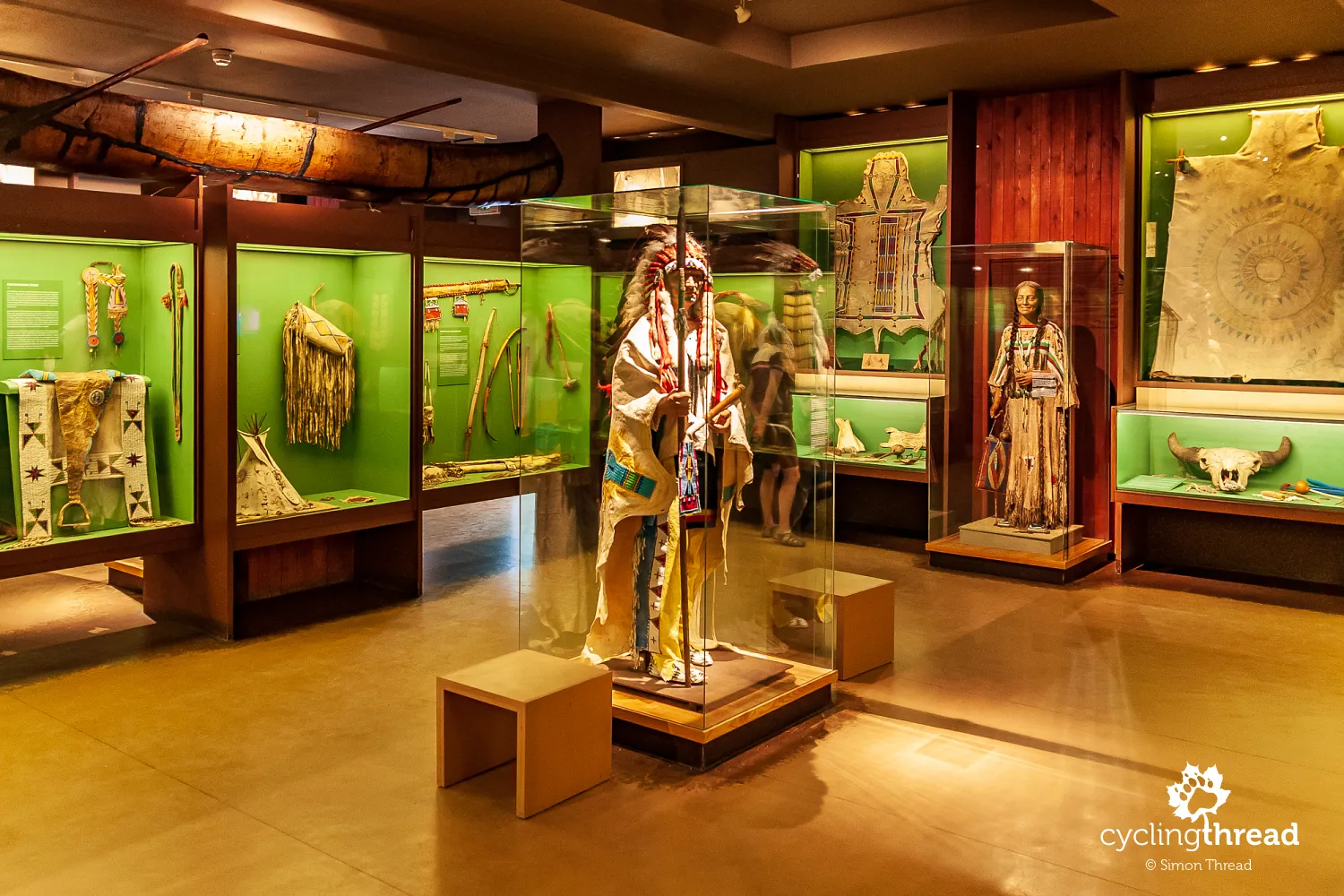
Germany's smallest wine region
Just a kilometer further, the slope of the Elbe Valley rises and soon becomes a steep wall covered in rows of grapevines. Interestingly, these picturesque Saxon vineyards between Dresden and Meissen make up the smallest wine region in Germany. Despite its size, Saxony's wine tradition is upheld by a sizeable community of winemakers - around three thousand of them. What's also fascinating is that due to the limited area of vineyards, most of the wine produced here is consumed locally - in the homes of Dresden residents and surrounding villages, and at the tables of local wineries and restaurants. That's why it's rare to find Saxon wines in stores or wine bars outside the region.
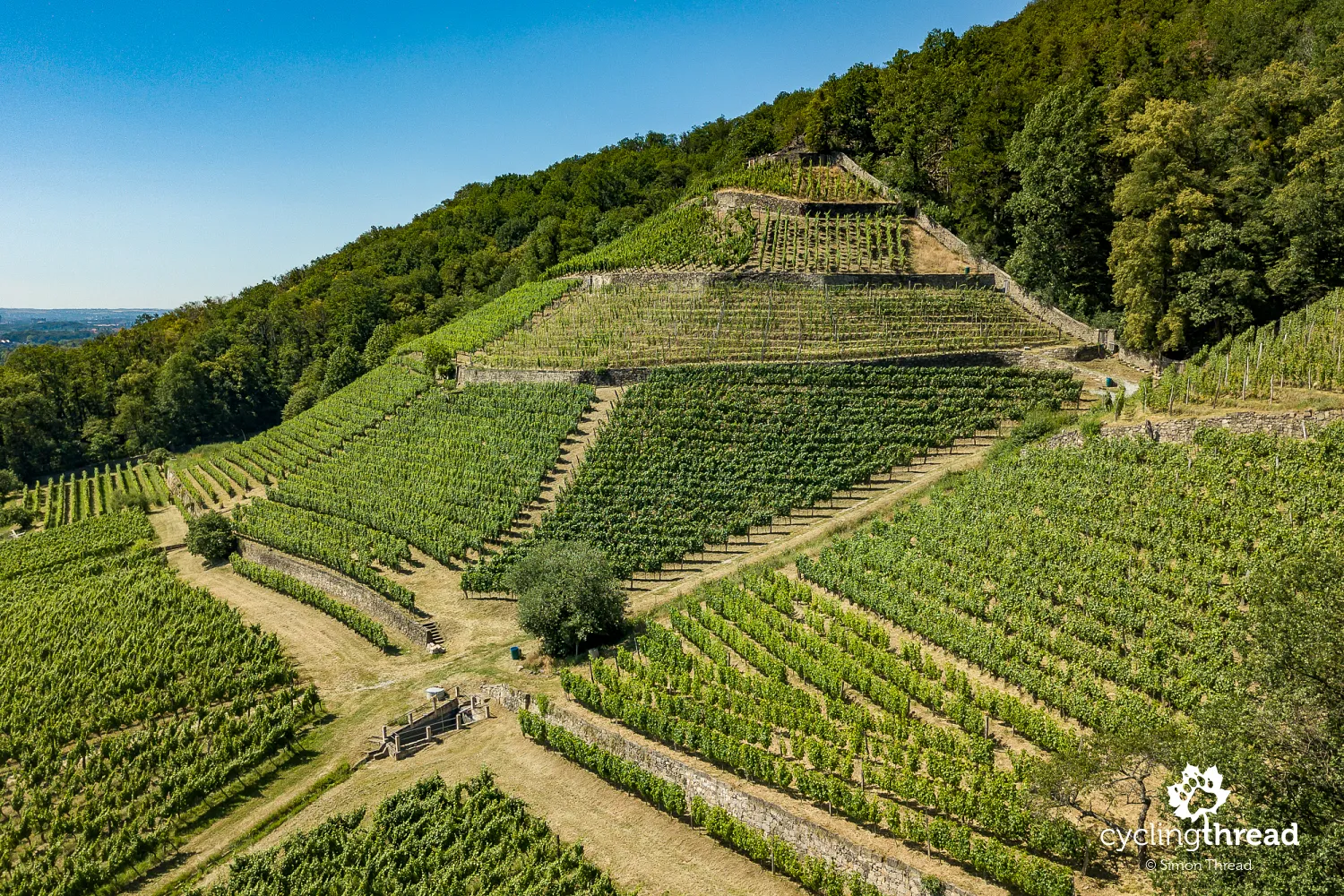
Our glasses of chilled rosé first clinked at the Karl Friedrich Aust winery in Radebeul. How we wished we didn't have to stop at just one...
Instead of stretching out on a picnic blanket among the vines, placing glasses and a bottle of Saxon wine on it as suggested, we had just a short walk through the vineyard with its incredibly friendly young owner. Karl took over the winemaking tradition from his parents, expanding both the wine production and the enotourism offer. Today, he welcomes guests in cozy rooms and opens his vineyard for cultural events, including theatrical performances.
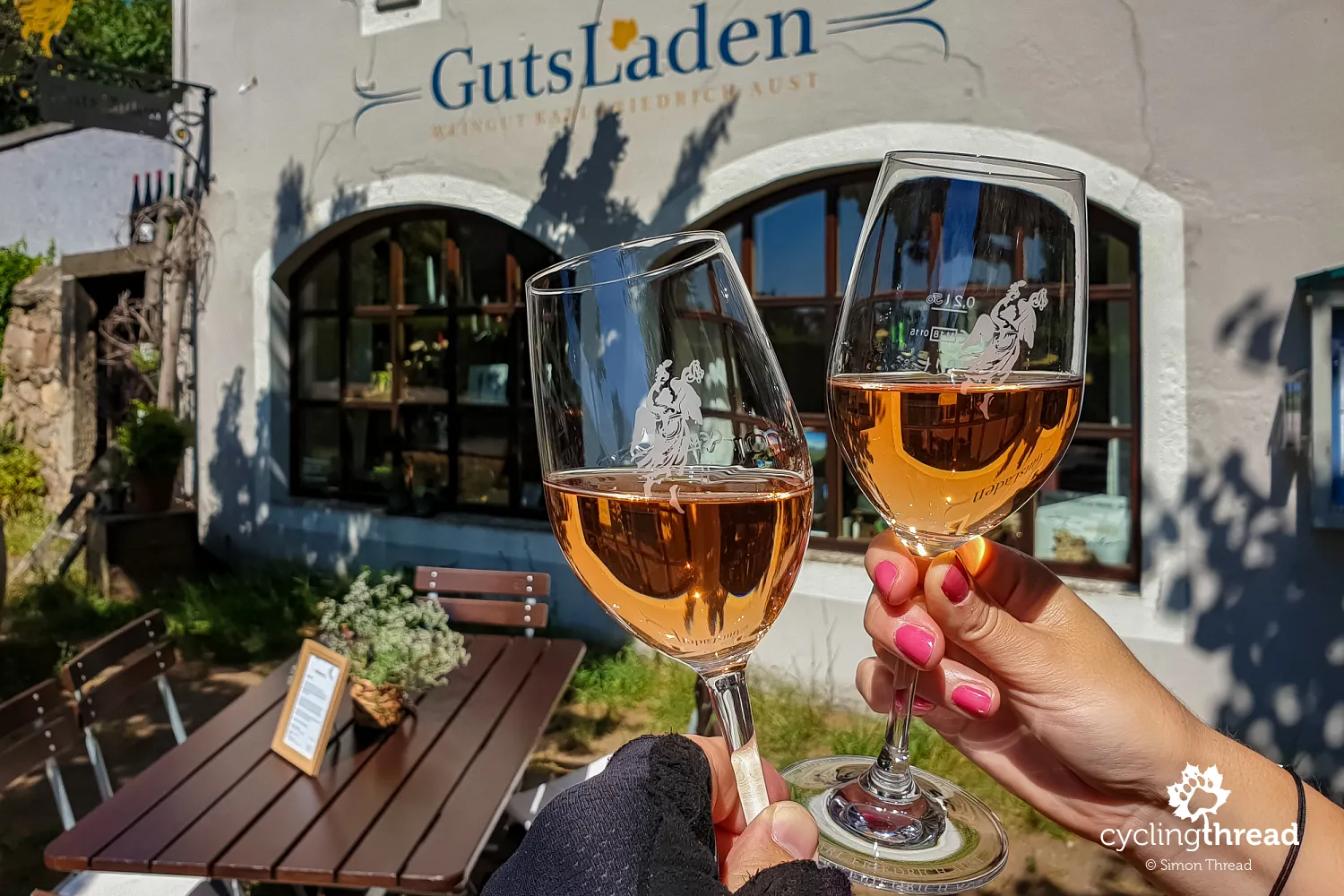
Wackerbarth Palace straight out of a postcard
Just a few kilometers further lies a place that probably appears most often in promotional materials about Saxony's wine region. The Wackerbarth Palace ensemble, located in Radebeul on a gentle slope of the Elbe Valley, looks like it was pulled straight from a postcard. In the past, our old acquaintance Augustus II the Strong would visit, and today the site is known for its excellent sparkling wine, made exclusively from local grapes. As we found out, the palace is also a venue for lavish events, including wedding ceremonies. It also houses a restaurant where you should definitely stop for a symbolic sip of the local wine.
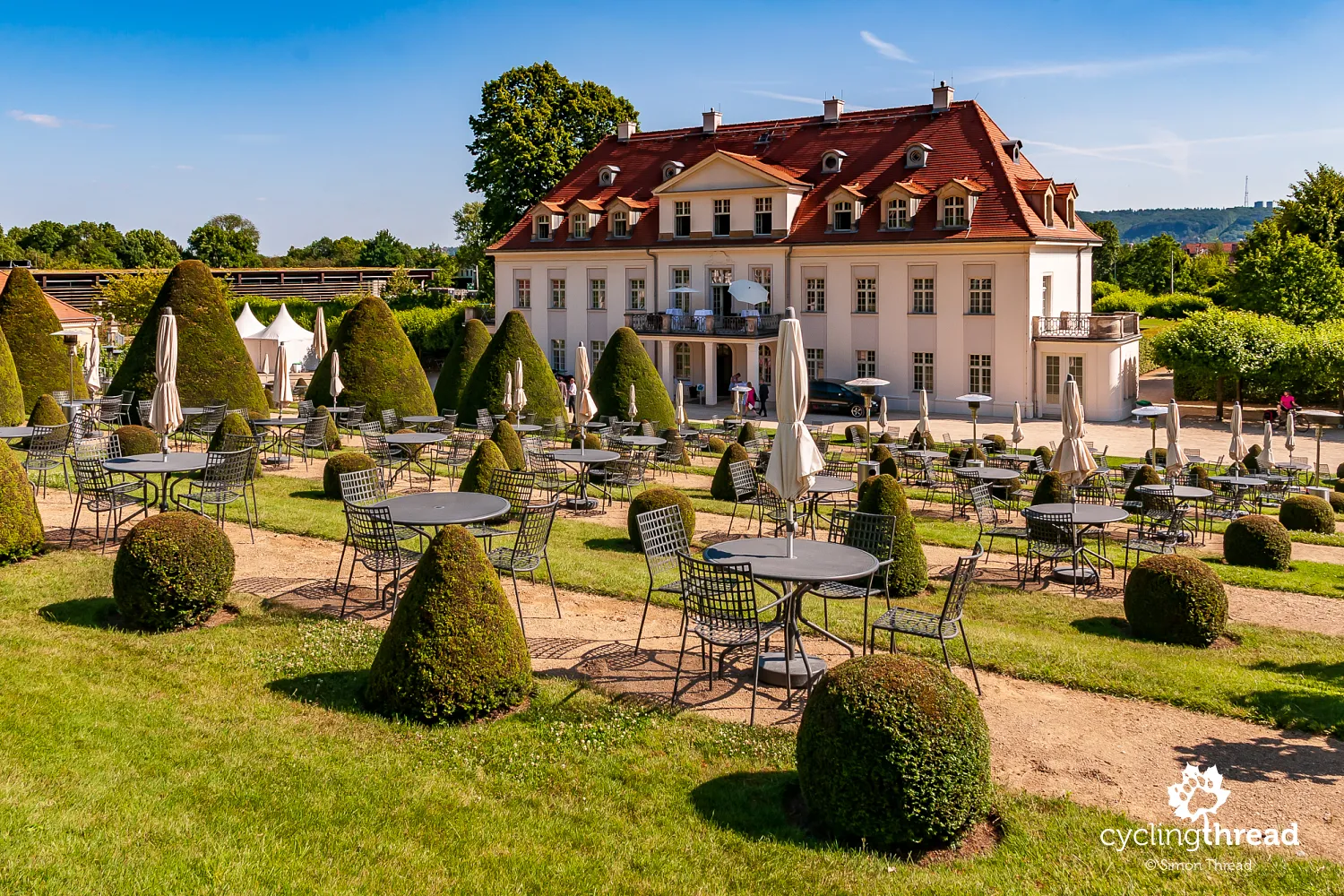
In Saxony, it felt like South Tyrol
Before returning to the famous Elbe cycle route, we followed signs for another route called the Weinberge-Tour, marked with a bunch of ripe grapes. It's one of the recommended routes promoted by the Dresden Elbland tourism board. No surprise there - the scenery between Radebeul and Meissen was simply breathtaking. In the thirty-degree heat, under canopies of vineyards, past charming buildings and along stone walls, it felt like we were somewhere in Italy. At times, it seemed we had already reached South Tyrol, which was supposed to be one of the stops on our journey. We both felt that the only thing missing was the sound of cicadas...
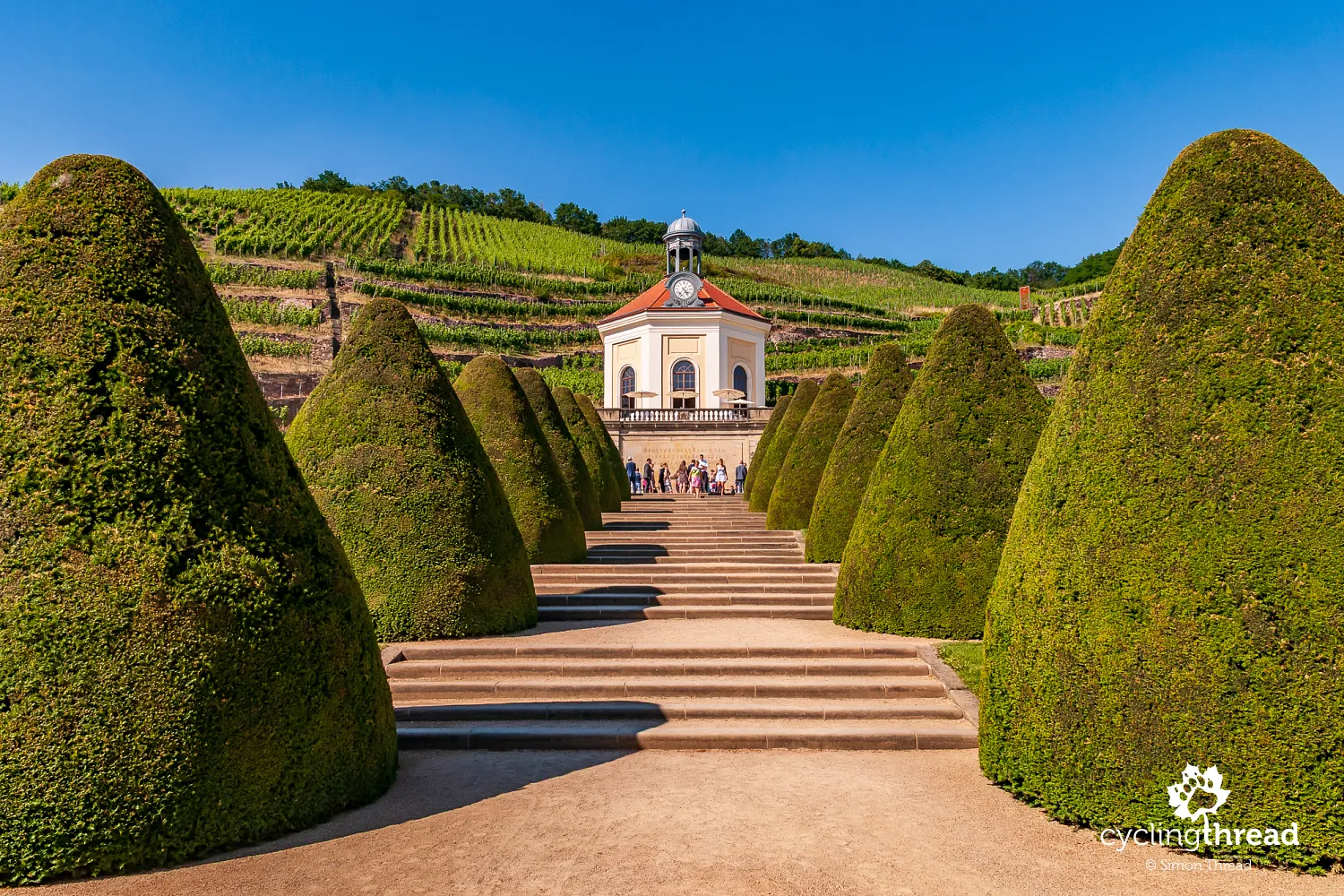
Castle Hill and the narrow streets of Meissen
The Elberadweg - the Elbe Cycle Route - didn't want to be outdone when it came to setting the tone of our Saxon adventure. But since our goal was to discover as many attractions of the Dresden Elbland as possible, we couldn't spend too much time by the river itself. The Elberadweg quickly took us to Meissen, where - in addition to the famous porcelain factory - it's worth climbing Castle Hill to see the bishop's castle (at the time covered in scaffolding), the Cathedral of St. John and St. Donatus, and Albrechtsburg Castle. The way down from Castle Hill winds through the narrow streets of Meissen's Old Town and leads to the current location of the porcelain factory. On the way, you pass a small but pleasant and quiet market square, surrounded by the town hall and tall colorful tenement houses. And it's best to stop in one of the restaurants here. After all, there's nothing worse than a growling stomach in a museum - especially when surrounded by such extraordinary items as Meissen porcelain.
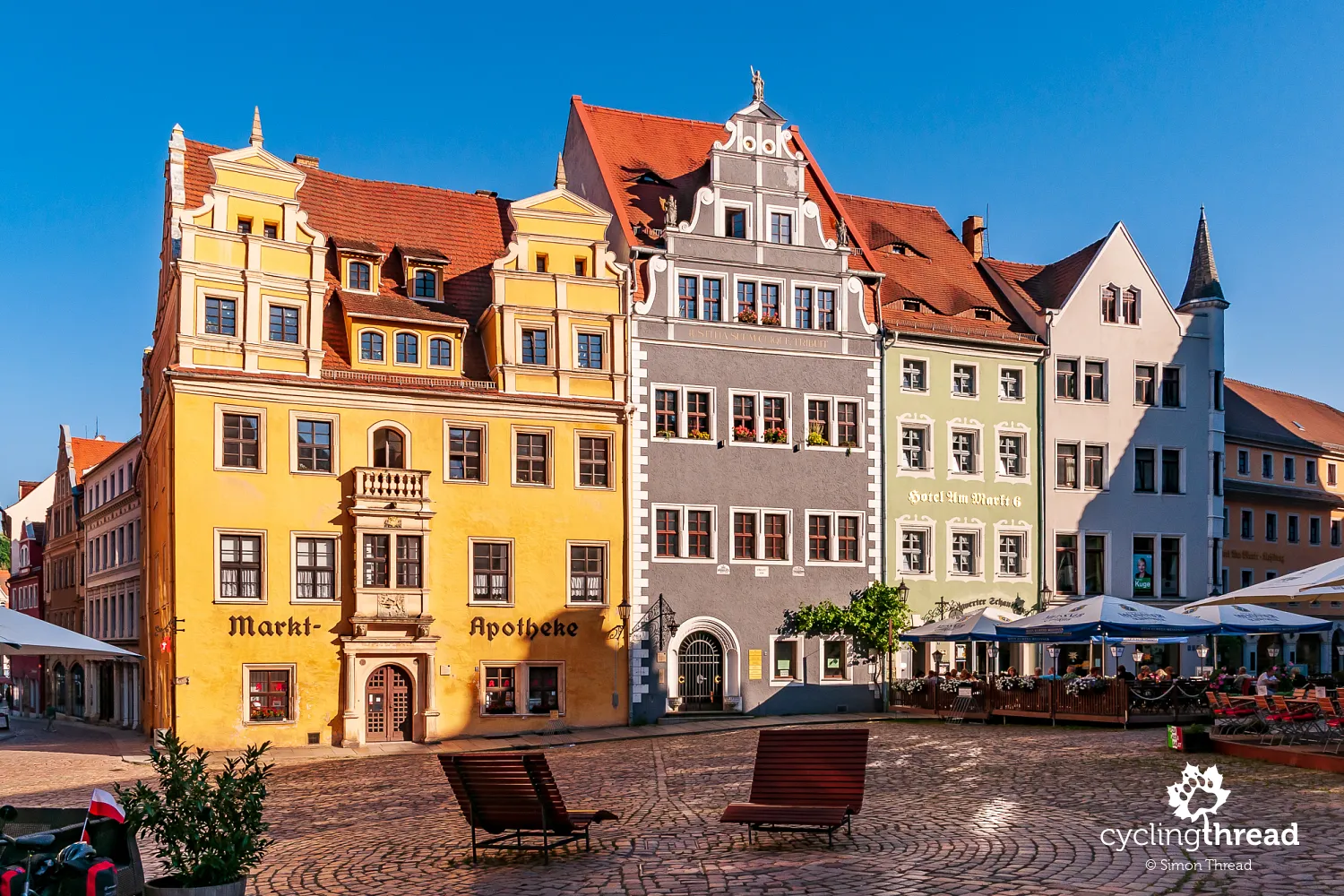
Meissen porcelain - white gold from the Elbe
The “Royal Polish and Electoral Saxon Porcelain Manufactory” - that was the original name of the famous porcelain factory in Meissen, another unique Polish trace along the Elbe. For the first 150 years of its existence, the factory was located inside Albrechtsburg Castle. It was founded, of course, by Augustus II the Strong, although his original commission was to develop a formula for producing gold, not porcelain. Today, three centuries later, Meissen porcelain is still made using traditional craftsmanship, and the most beautiful, most valuable pieces are on display in the museum inside the factory building.
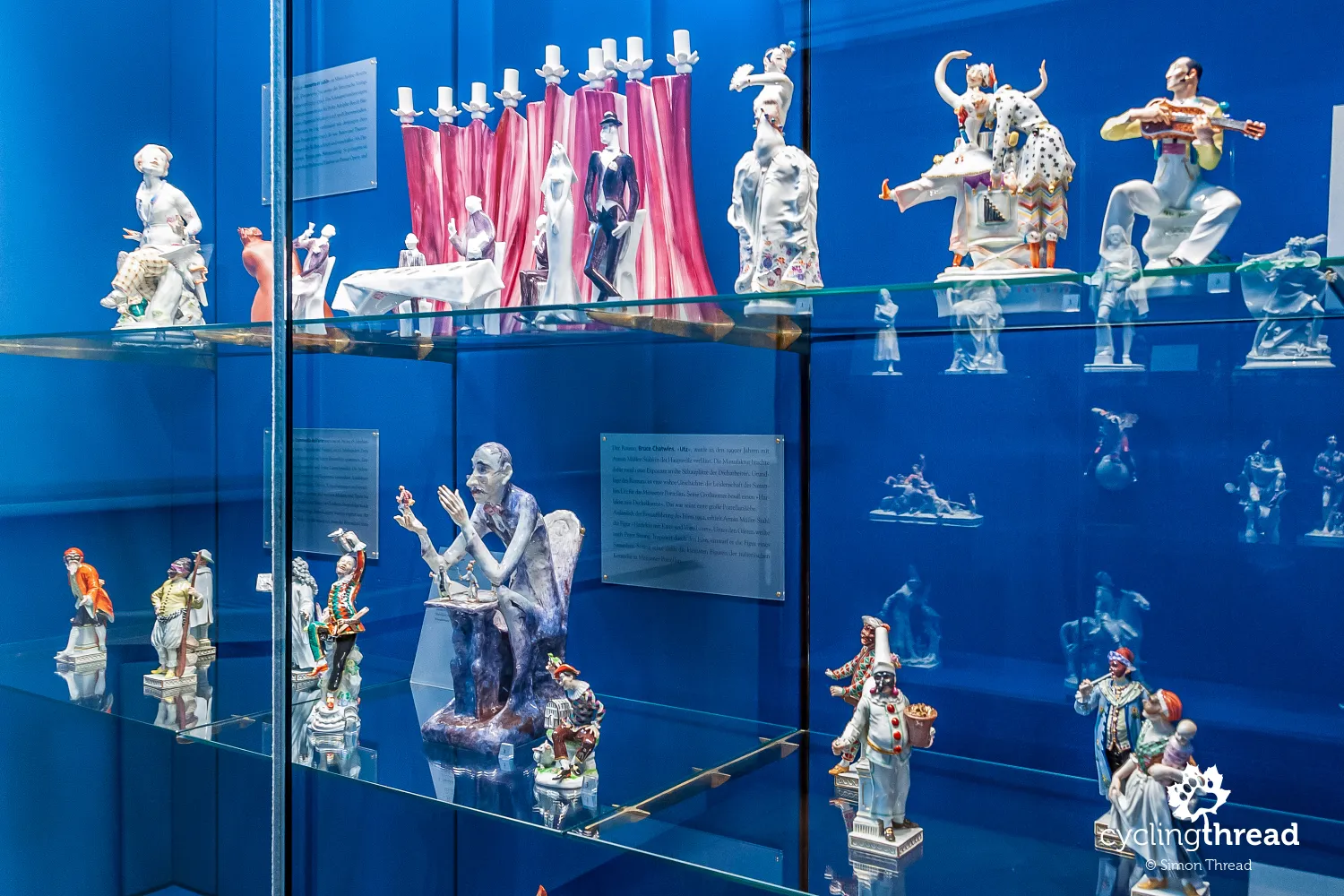
A fairytale water palace in Moritzburg
Another reminder of the Polish chapter in Saxony's history awaits at Moritzburg Palace, located on an island in the middle of a lake. Above the entrance, just beneath the row of antlers for which the palace is famous, you'll find the coat of arms of the Polish–Lithuanian Commonwealth, placed there by the royal architects of Augustus II the Strong. The palace interiors are filled with antlers and hunting trophies, reflecting the Polish-Saxon monarch's great passion for hunting. Among the most valuable items are also the leather wall coverings decorated with golden patterns. The palace's location and its surrounding park are equally impressive and well worth a relaxing walk. A bit further away - but still right by the westbound cycling route - stands... a lighthouse. Once again, we felt right at home.
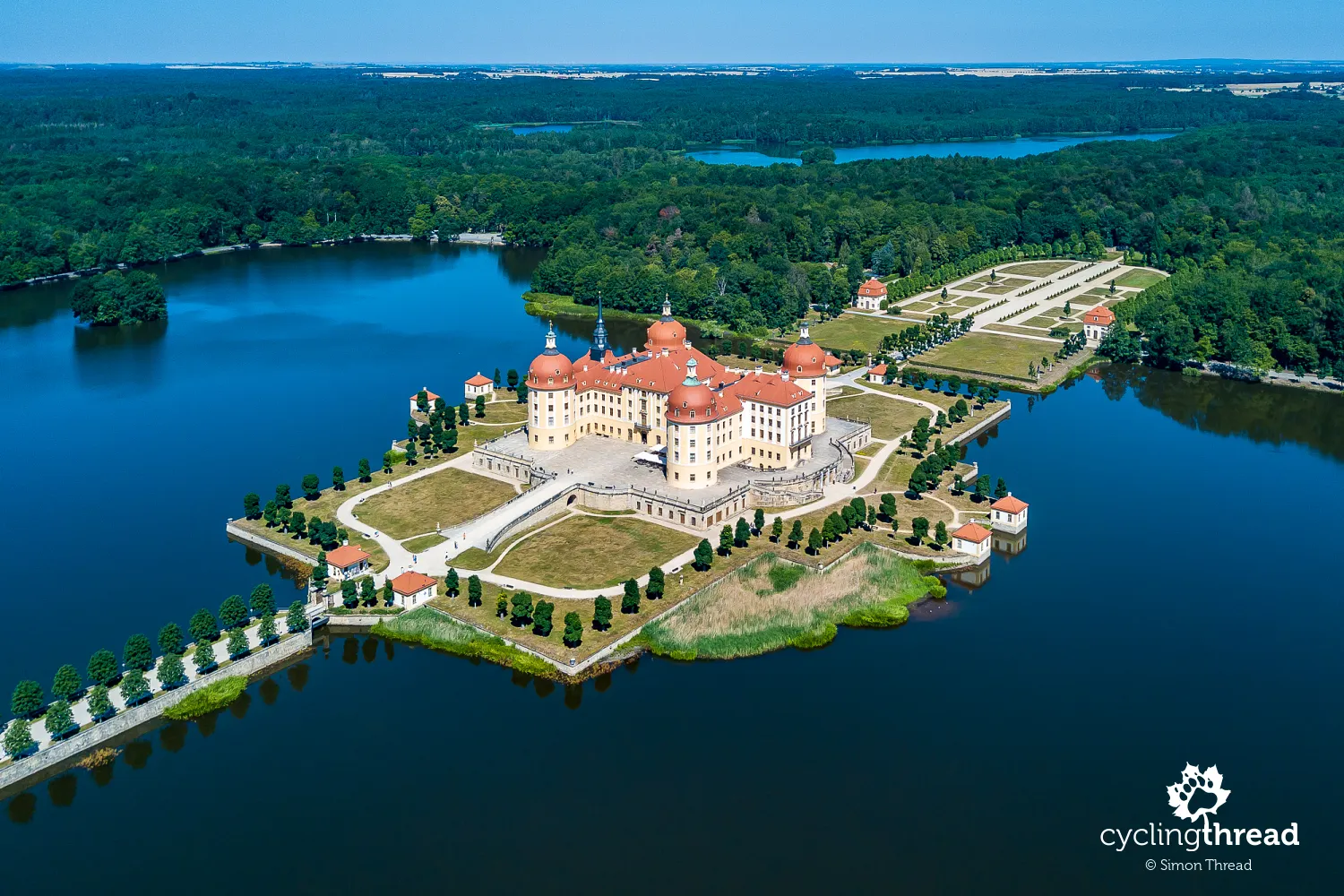
A glass of pilsner at the Radeberger brewery
After twenty kilometers, the mood changed completely. From the refined world of Elbe Valley wines, we rolled up to the grand building of a brewery belonging to one of the most recognizable beer brands in Poland (or so I believe!). We spent the next two hours in the cool halls of the Radeberger brewery, naturally located in the town of Radeberg. We learned about the history of the company (now part of the Oetker Group) - interestingly, Radeberger was the first brewery in Germany to brew pilsner-style beer and even led legal efforts to challenge the use of the name “pilsner” for beers brewed outside of Plzeň. We ended the visit with a short film presentation and, of course, a beer tasting. It's good to know that bikes can be safely left by the administration building during the tour - the entire area is fenced and guarded.

The best overnight stay in Saxony at Elbe Paradise
That night, we found our favorite accommodation of the whole Saxony trip. A guesthouse with the charming name “Elbe Paradise” sat right on the outskirts of Pirna, directly on the riverbank. We went straight from our bikes to a late dinner at the on-site restaurant and stayed until 11 p.m. Delicious food, a dessert to follow, and a lovely atmosphere shared with other guests - most of them fellow cyclists exploring the Elbe route. A few hundred meters away, the lights of Pirna shimmered in the waters of the Elbe. This is exactly the kind of place you'll find in the Bett+Bike network of cyclist-friendly accommodations. Most of them are listed on Booking.com, where you can sometimes catch a great deal. And it's worth remembering that when planning a visit to Dresden or other popular destinations in Germany, it's a good idea to book your stay in advance.
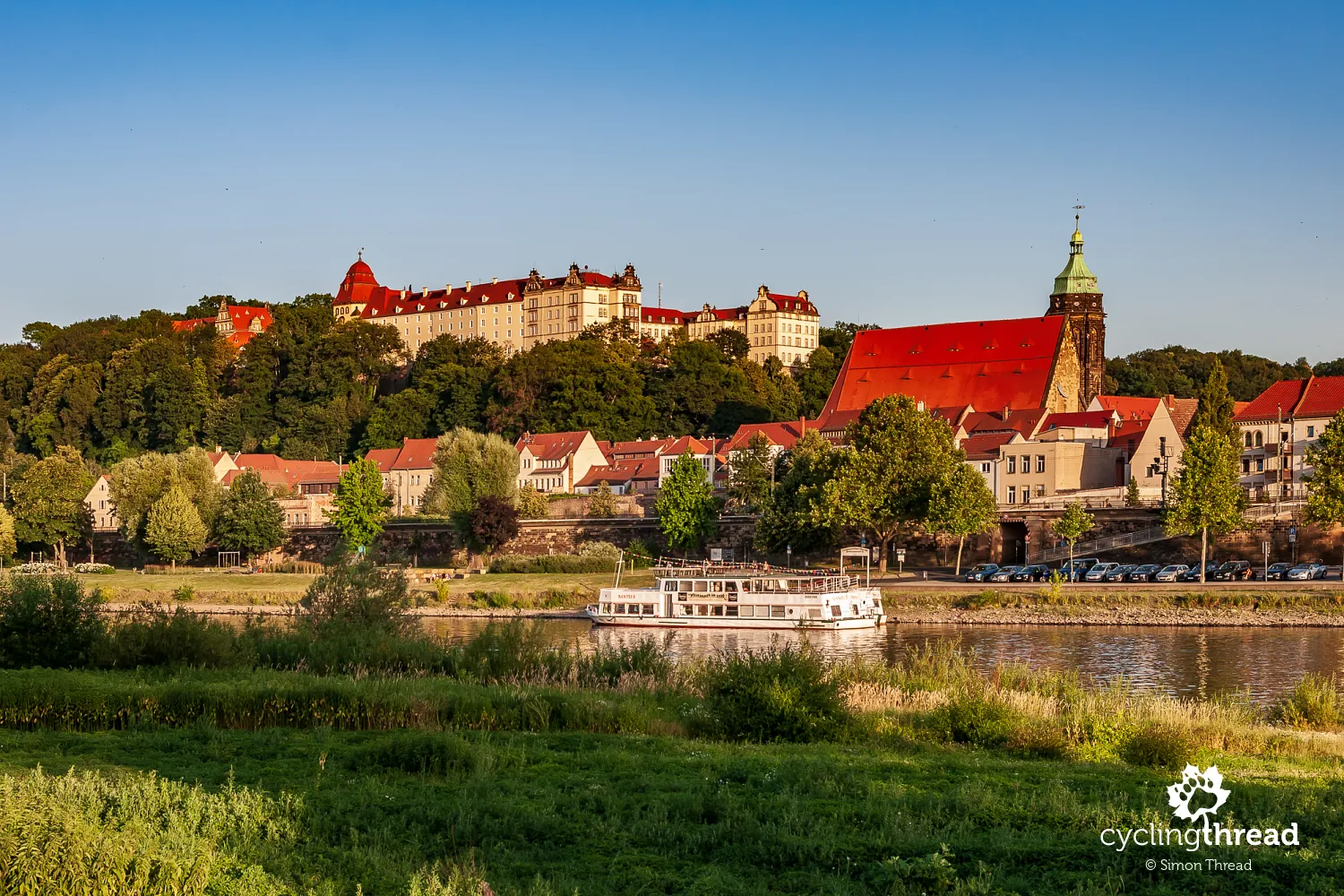
Pirna's darkest chapter
Picturesque Pirna, where we took a morning stroll the next day, marked the southern end of our route through the Dresden Elbland. Among the many chapters of its long history, events from more recent times stand out. One of the darkest moments came under Nazi rule, when the Sonnenstein Castle was turned into a “killing institute.” Around fifteen thousand people - mostly those with mental illnesses - were murdered there as the regime refined its methods of extermination. After the facility was shut down, some of its staff were sent to serve in concentration camps in Poland. Today, an exhibit at the castle tells the story of these tragic events. A different kind of catastrophe struck Pirna - and other Saxon towns - in 2002, when a flood caused the Elbe to rise so high it reached the town square, which normally stands well above the waterline.
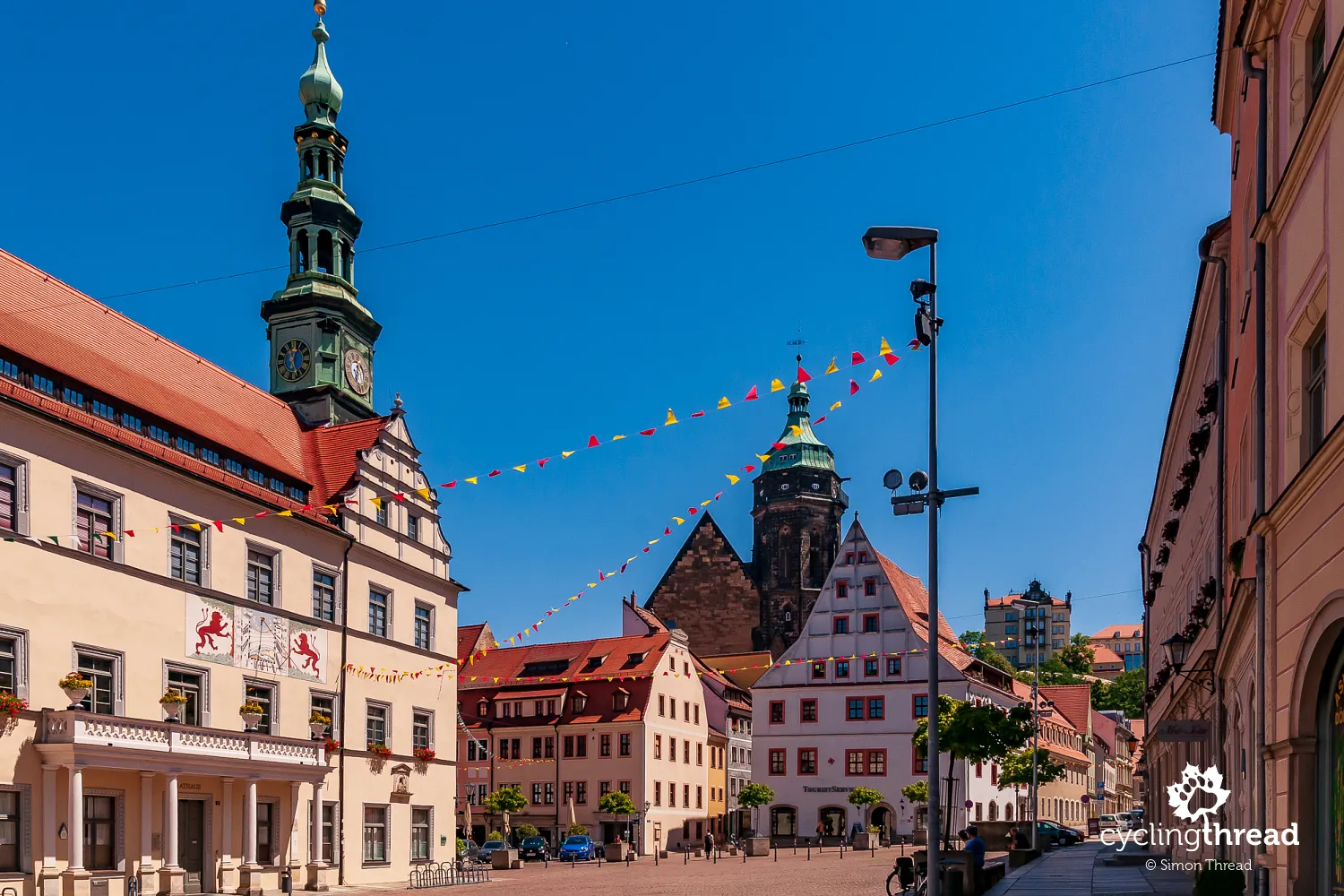
The Elbe's low water level at Pillnitz Palace
It's hard to take the current water level of the Elbe too seriously when comparing it to the record flood marks found in the region. Even a photo of Pillnitz Palace, located right on the riverbank, shows the water far below the lowest steps built to give palace guests easy access to… gondolas once floating on the Elbe. Sadly, we only managed to admire the beautiful palace from a distance, as it was closed off due to the “Elbhangfest” festival taking place that day. We were stopped at a temporary gate where not only were tickets being checked, but cycling beyond the entrance was also forbidden. So instead of Pillnitz Palace, we turned in the opposite direction - and ended up at yet another Saxon vineyard. And what a vineyard it was!
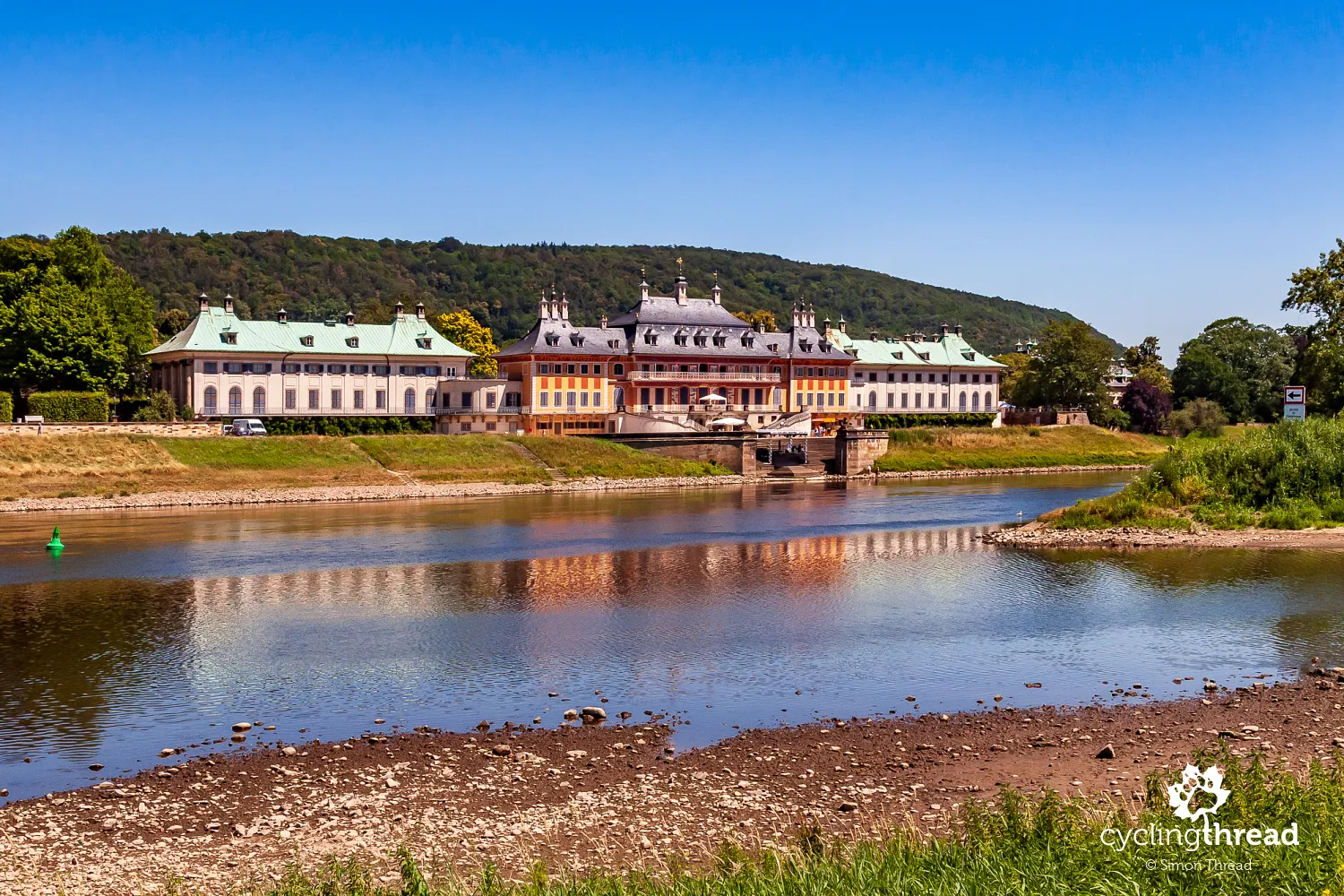
A Polish sculptor creates extraordinary works...
The story of this unique place in Saxony begins in 1992 and revolves around a Polish-German couple - Małgorzata Chodakowska and Klaus Zimmerling. Both are artists, though in very different fields. Małgorzata is a sculptor, and most of her works depict female figures - some of which are transformed into mesmerizing fountains. These sculptures, combined with water, become astonishing artistic installations. Some of them even move, creating geometric patterns with streams of water that shoot from the sculptures themselves. It's truly something fantastic. In the small on-site gallery, you can see many of her wooden sculptures, whose bronze replicas are available for sale. Until autumn 2019, her works were also on display at the City Museum in Wrocław. We were lucky enough to view some of them as her proud husband showed us around. Photos of Małgorzata Chodakowska's art can be seen on her official website.
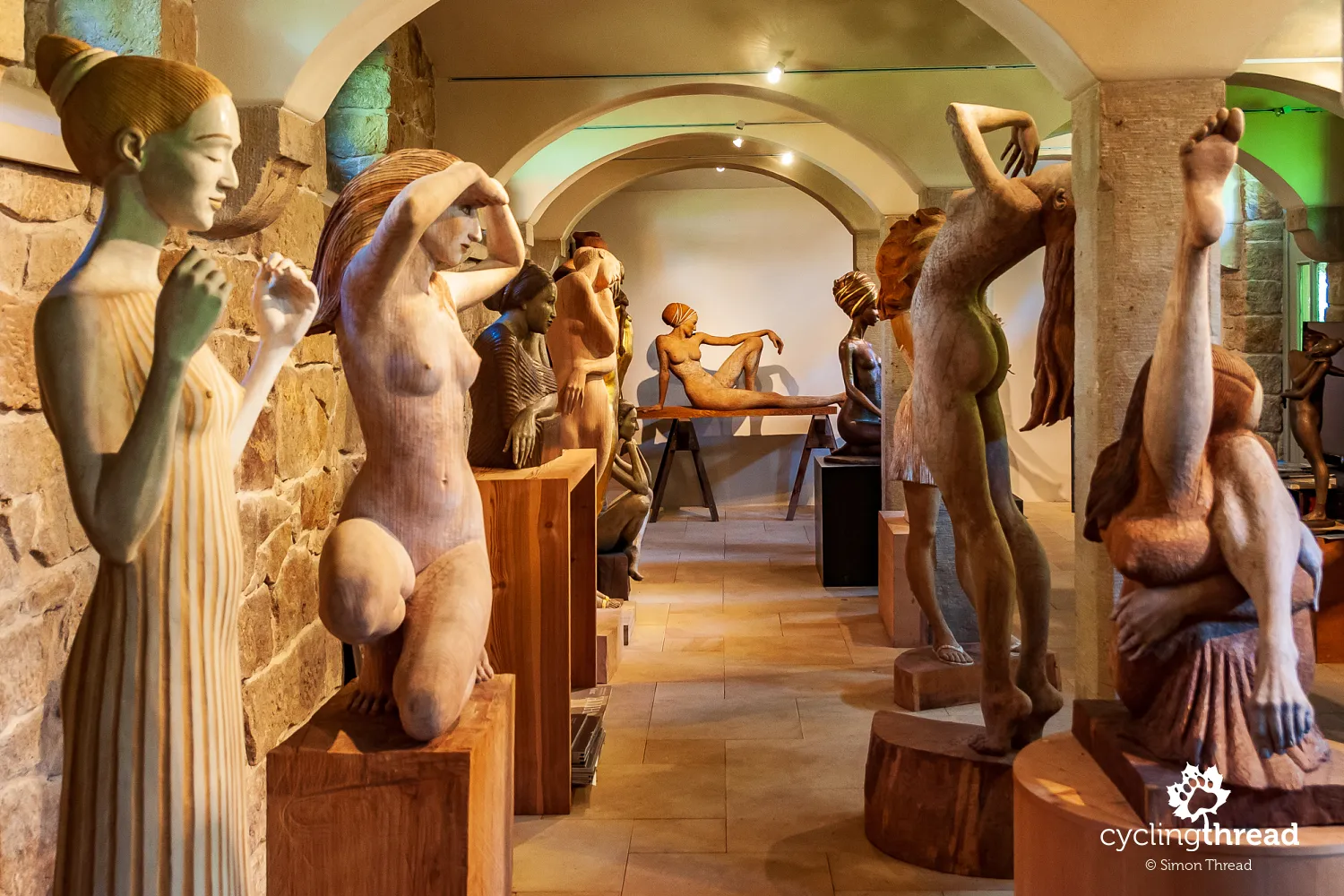
...in a beautiful vineyard in the Elbe Valley
Photos of Małgorzata Chodakowska's sculptures also grace the labels of the elegant, slender wine bottles produced by Klaus Zimmerling in the vineyards surrounding their studio. From roughly four hectares of vines, they produce about 15,000 bottles a year. But bringing this delicious wine to the table takes years of experience, favorable local conditions, and great care. That includes things like a drip irrigation system releasing a single drop of water every few seconds, or Klaus's gentle hands carefully turning grape clusters toward the Saxon sun.
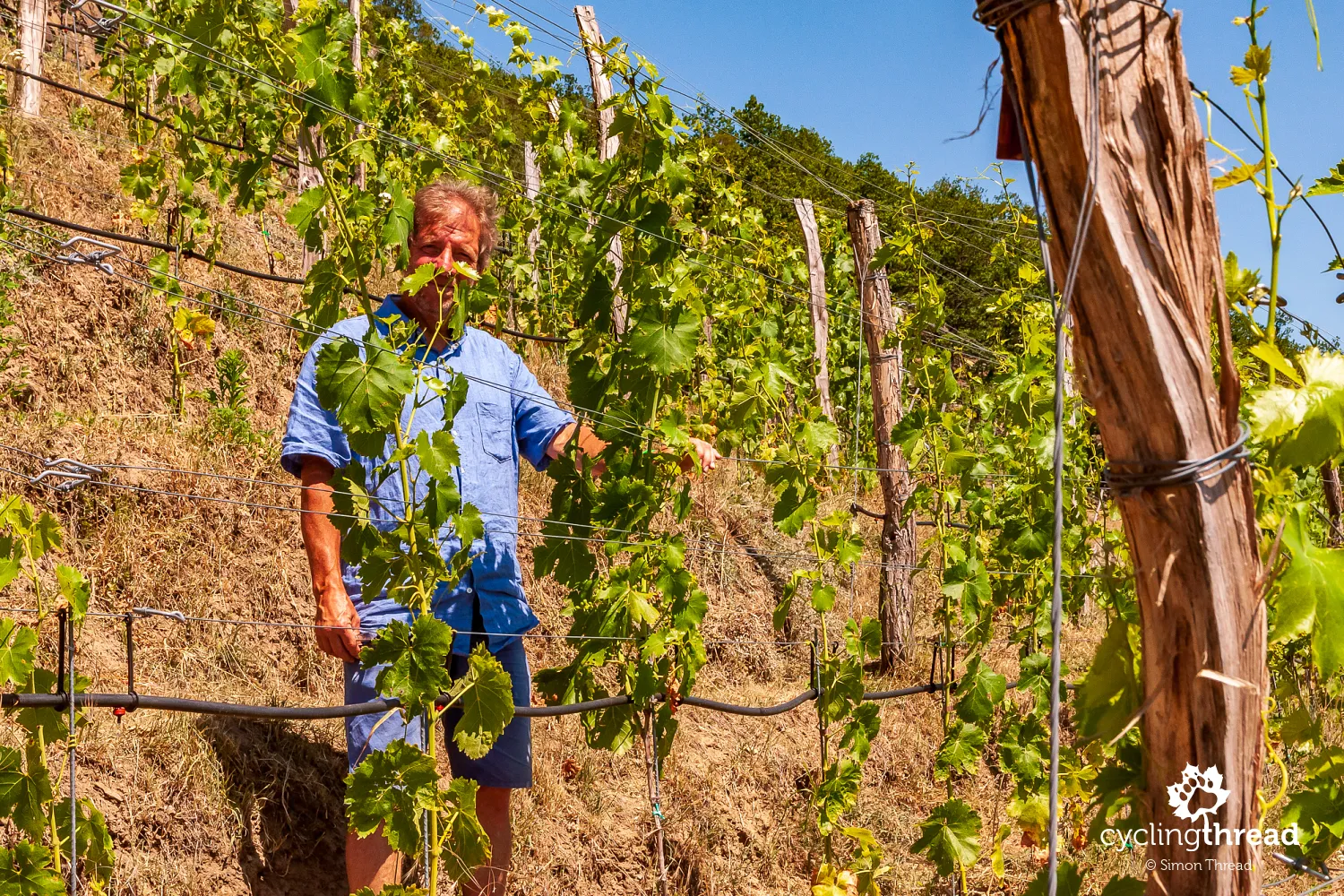
Cycling routes in the Dresden Elbland
We reached all of the places mentioned in this text by bike. Our total distance pedaled around Dresden was just over 150 kilometers, spread across two and a half days. The longest section took us along the queen of Germany's cycling routes - the Elberadweg - which runs through Dresden and continues all the way to the North Sea. For the leg from Meissen through Moritzburg and Radeberg to Pirna, we planned a route using local cycle paths, some of which are recommended by the Dresden tourism board. Among the routes we recommend in Saxony is the previously mentioned Weinberge-Tour, and it's also worth riding the short cycling path called Alter Bahndamm, built on a former railway line between Radeberg and Pillnitz.
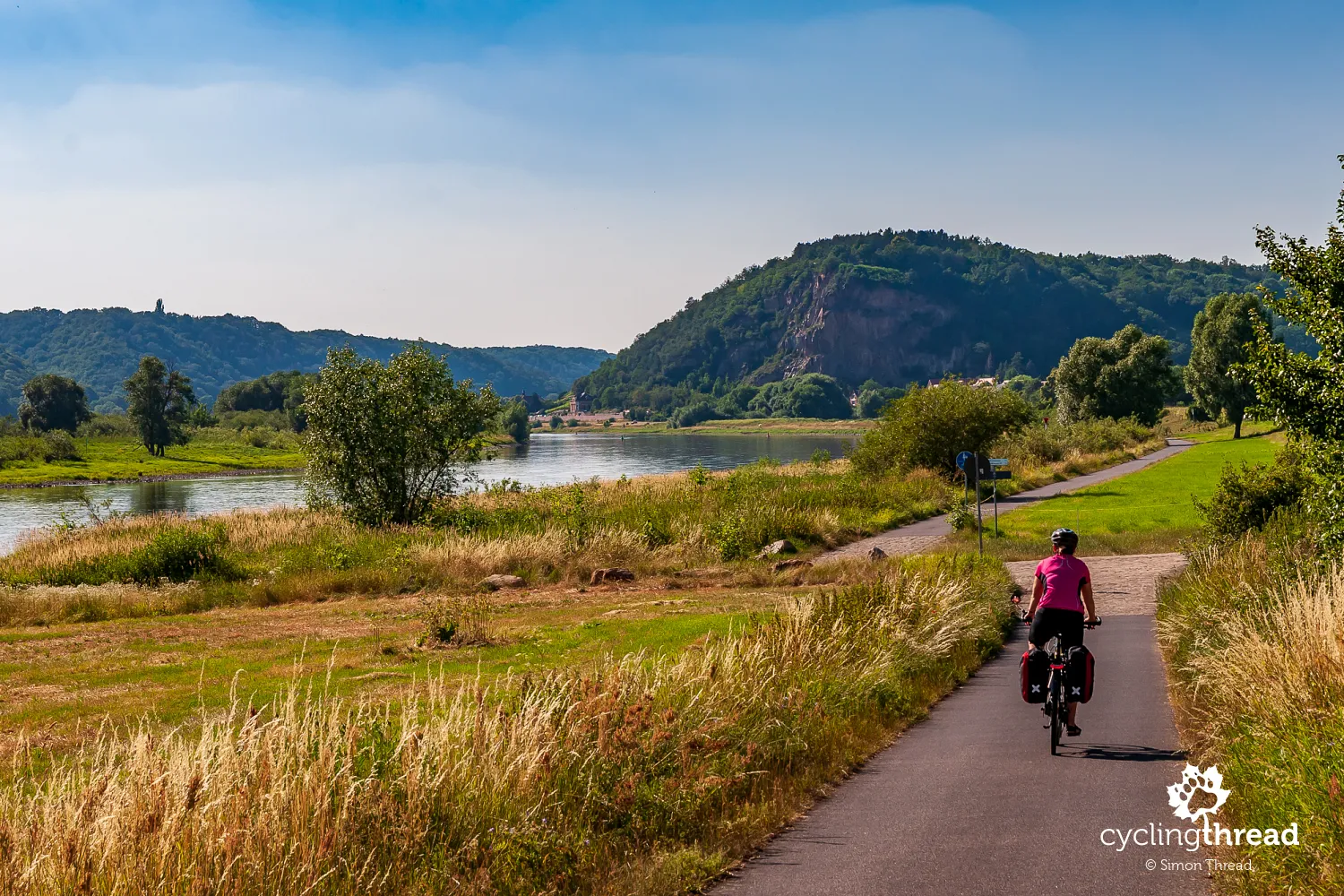
Military history with a view of Dresden
This wide range of themes you can explore around Dresden and the Dresden Elbland came full circle for us when we decided to stay one more day in Saxony's capital. Our first destination was the Bundeswehr Military History Museum, located in the Neustadt district north of the city center. The museum focuses on the history of the German armed forces - from their formation and equipment to commanding figures - and features a wide variety of artifacts and memorabilia. Among the exhibits spread over three floors is even a bicycle used by German soldiers during World War II. Outside the uniquely redesigned building of the Dresden museum, you'll find military vehicles including modern combat vehicles and tanks. Besides exploring the exhibits, it's worth going up to the viewing terrace in the museum's striking glass wedge to take in the sweeping panorama of Dresden.
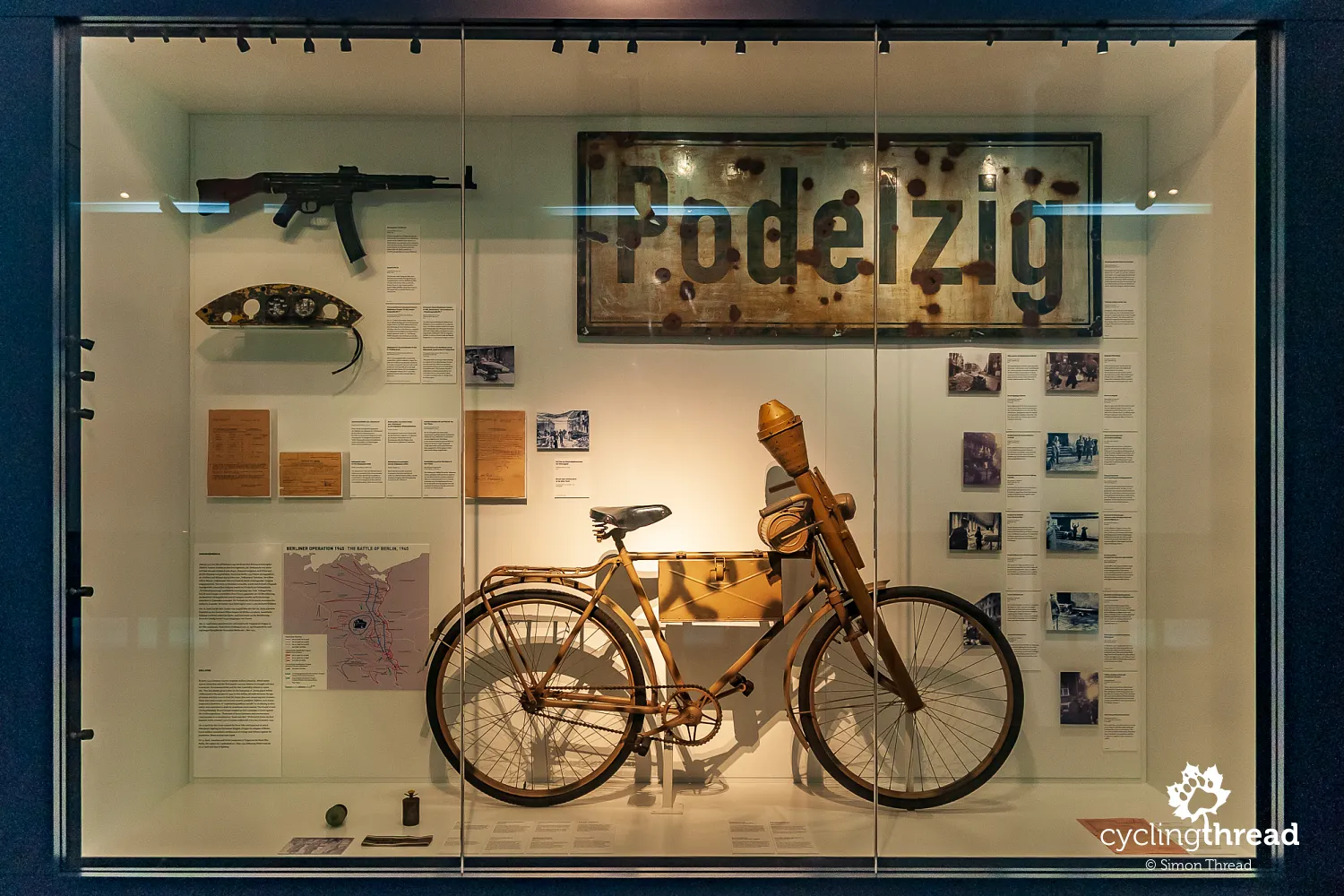
Hygiene, transport, and a glimpse of a ruined city
But that's still not all when it comes to museums worth visiting in Dresden - though it's impossible to name all several dozen, let alone step inside each one. Some of the more original ones include the German Hygiene Museum and the Transport Museum, located just a few steps from the Frauenkirche. One we deeply regret missing was the Dresden Panometer - a closed rotunda with an interior viewing platform surrounded by a massive panoramic image of the bombed-out city. Even the photos on the website are striking, so seeing the installation in person must be a powerful experience. Still, it's the classic historical and art-focused museums that draw the most visitors to Dresden, including the Historic Green Vault.
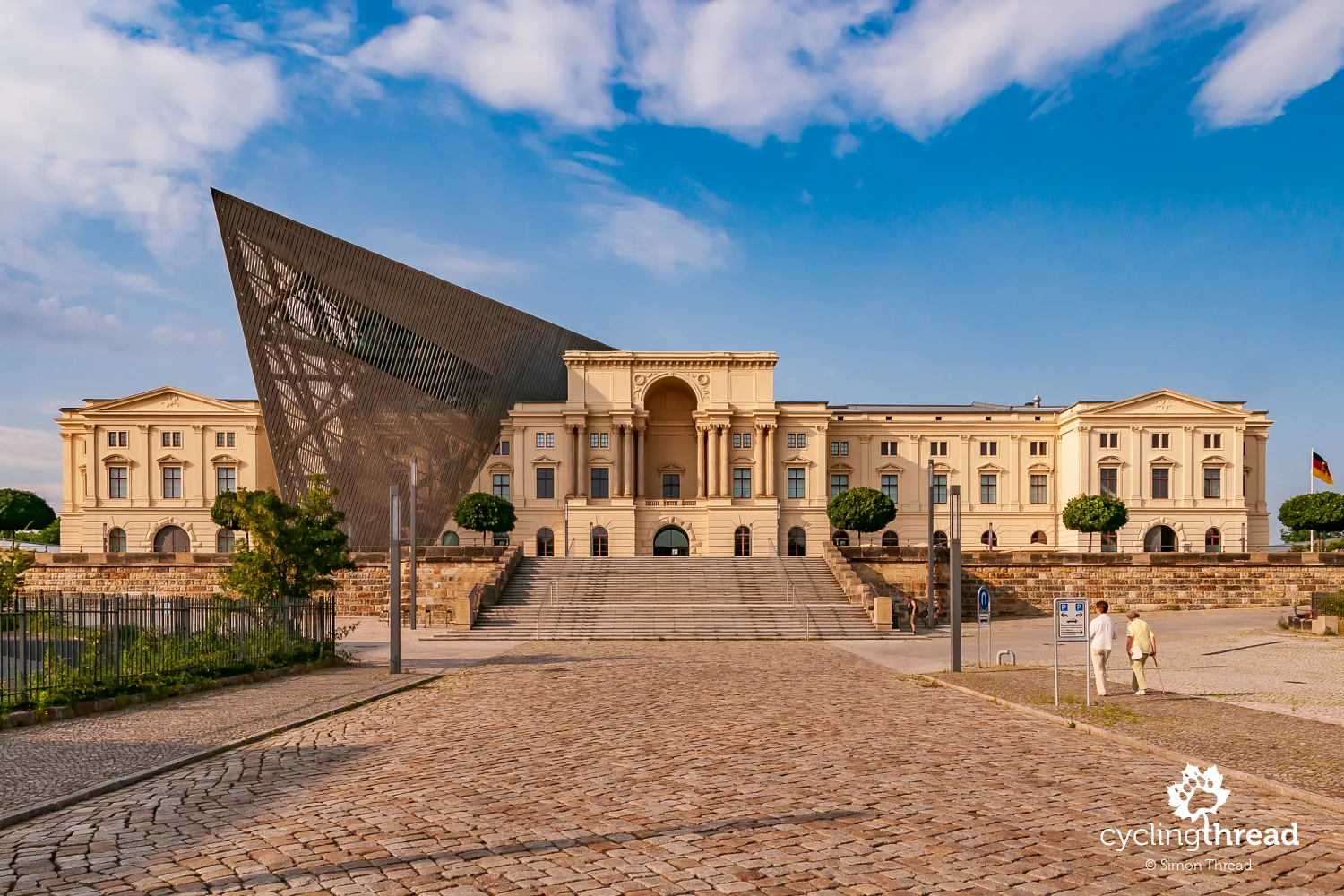
Some of the most valuable art collections in Europe
The Historic Green Vault and the New Green Vault are part of a massive collection of artworks amassed over the past few centuries - once again thanks to Augustus II the Strong and Augustus III of Saxony. This collection, dating back more than 450 years and originally known as the Cabinet of Curiosities, is now considered one of the most precious treasure troves of art in Europe. Gold, amber, and ivory masterpieces are displayed in the Dresden Royal Palace, inside a climate-controlled section protected by an airlock and carefully monitored by guards. Unfortunately, photography is strictly prohibited. Visiting requires time and a calm pace - the audio guide included with your ticket shares detailed stories about many individual exhibits. You can end your palace visit by climbing the Hausmannsturm - the castle tower - to enjoy sweeping views of Dresden, the Elbe, and the nearby Cathedral of the Holy Trinity.
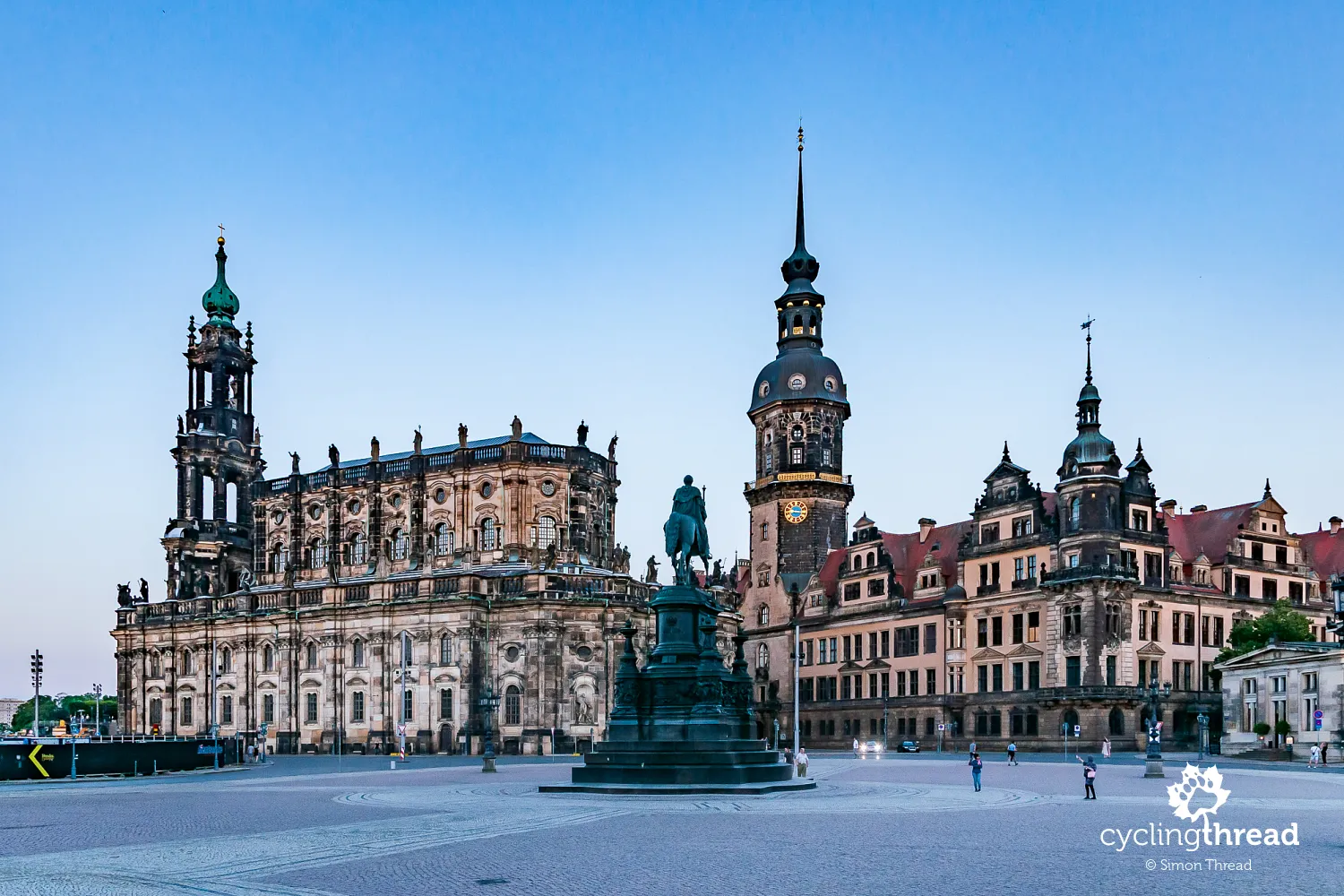
Extraordinary technical heritage in Dresden
A city with such exceptional cultural heritage also played a role in major technological achievements. Dresden is home to the world's oldest suspended railway still in daily operation - the Schwebebahn Dresden. It links the Loschwitz and Oberloschwitz districts, but unfortunately, our packed itinerary and earlier visit to the Zimmerling vineyard meant we didn't have time to ride it. Just a few hundred meters from the lower station is the start of another unusual railway, even a few years older. This one is a traditional funicular - the Standseilbahn Dresden. Nearby, also in the Loschwitz area (once its own town, now part of Dresden), rises another symbol of Saxon engineering - the Blaues Wunder (Blue Wonder) bridge. At the time of its construction, it was a technological marvel and remains one of the city's iconic landmarks.
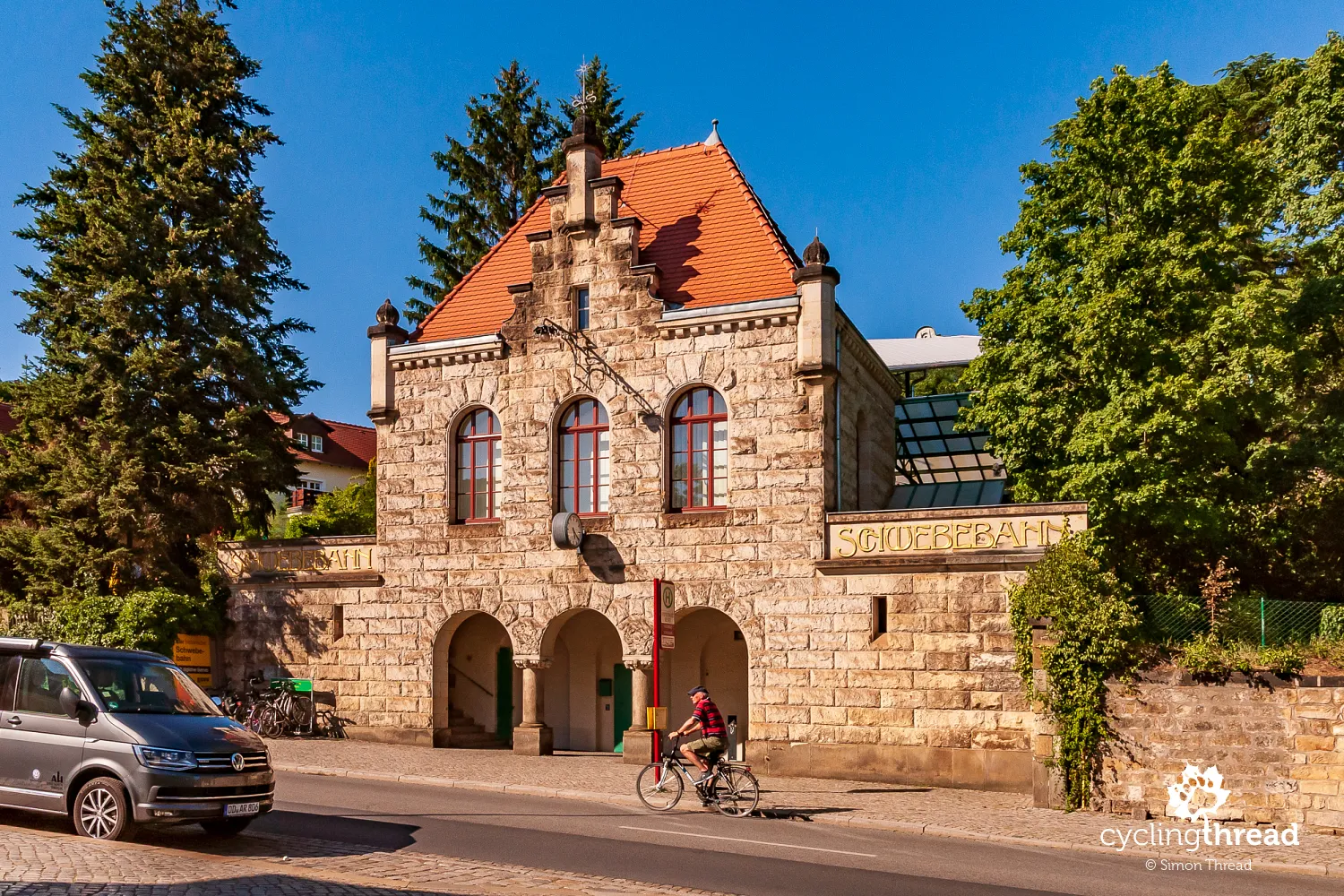
Beautiful posts of the Polish-Saxon postal service
While exploring Dresden and the Dresden Elbland, it's hard not to notice the beautifully restored posts of the royal Polish-Saxon postal system, which once connected Dresden and Warsaw via three major routes. Designed by the royal geographer Adam Friedrich Zürner, they were meant to guide travelers and indicate distances along the way. They listed nearby towns on the route and the remaining distance to key destinations. Today, they impress with their gilded details and exquisitely restored coats of arms - including that of the Polish–Lithuanian Commonwealth. Along our journey, we spotted these historical markers in places like Meissen, Radeberg and Pirna.
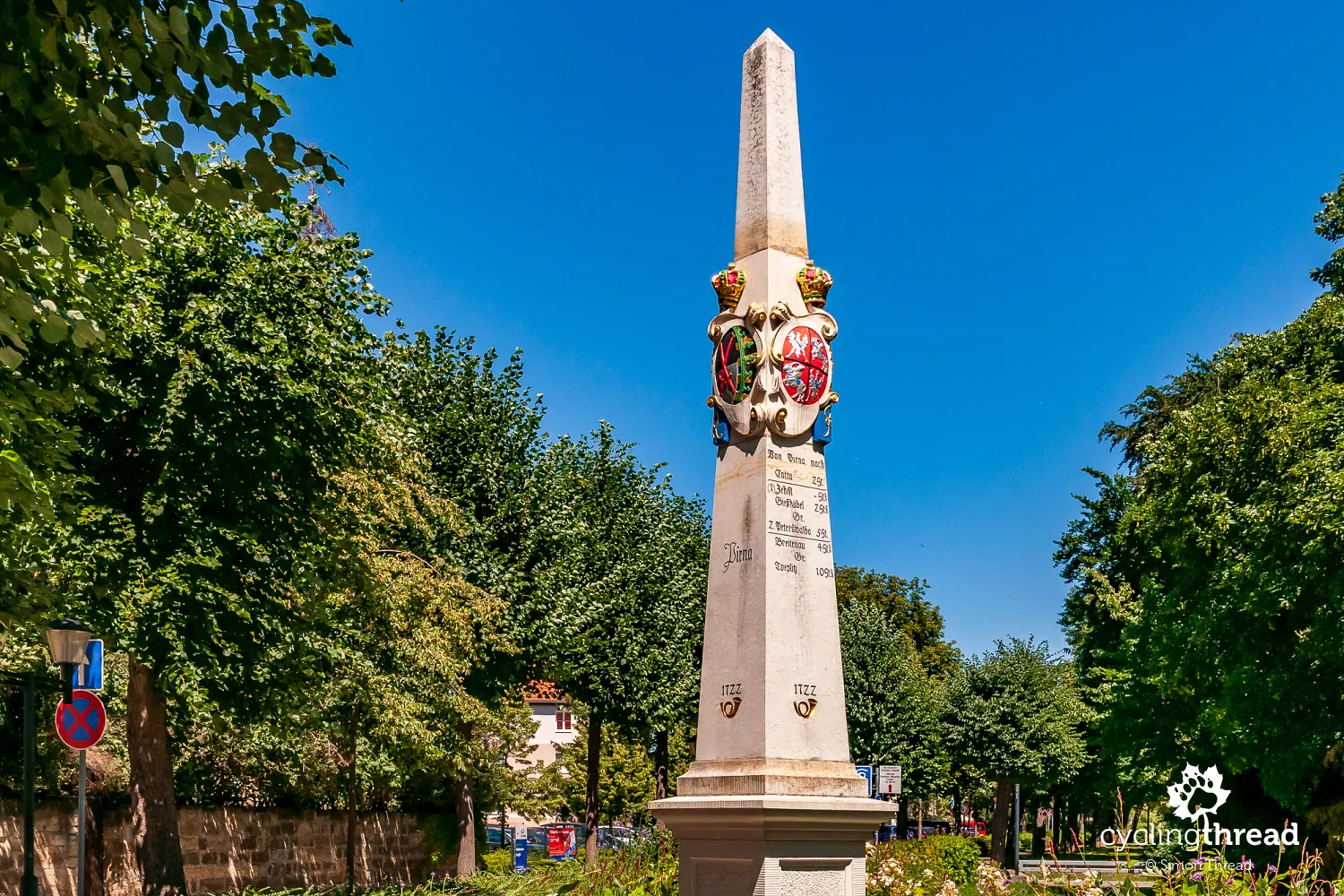
Dresden as European Capital of Culture 2025?
It looks like there'll be no shortage of cultural events in Dresden in the coming years. During our time in Saxony, we came across several festivals and activities featuring yellow promotional elements with the words “Dresden 2025.” A quick online search revealed that Dresden is applying to become the European Capital of Culture in 2025. We're keeping our fingers crossed, especially with the memory of hundreds of people lounging on bright yellow deckchairs and singing their hearts out to global karaoke hits on Dresden's Neumarkt square, right in front of the Church of Our Lady. That must have been the most delightful late afternoon vibe a traveler could ask for.
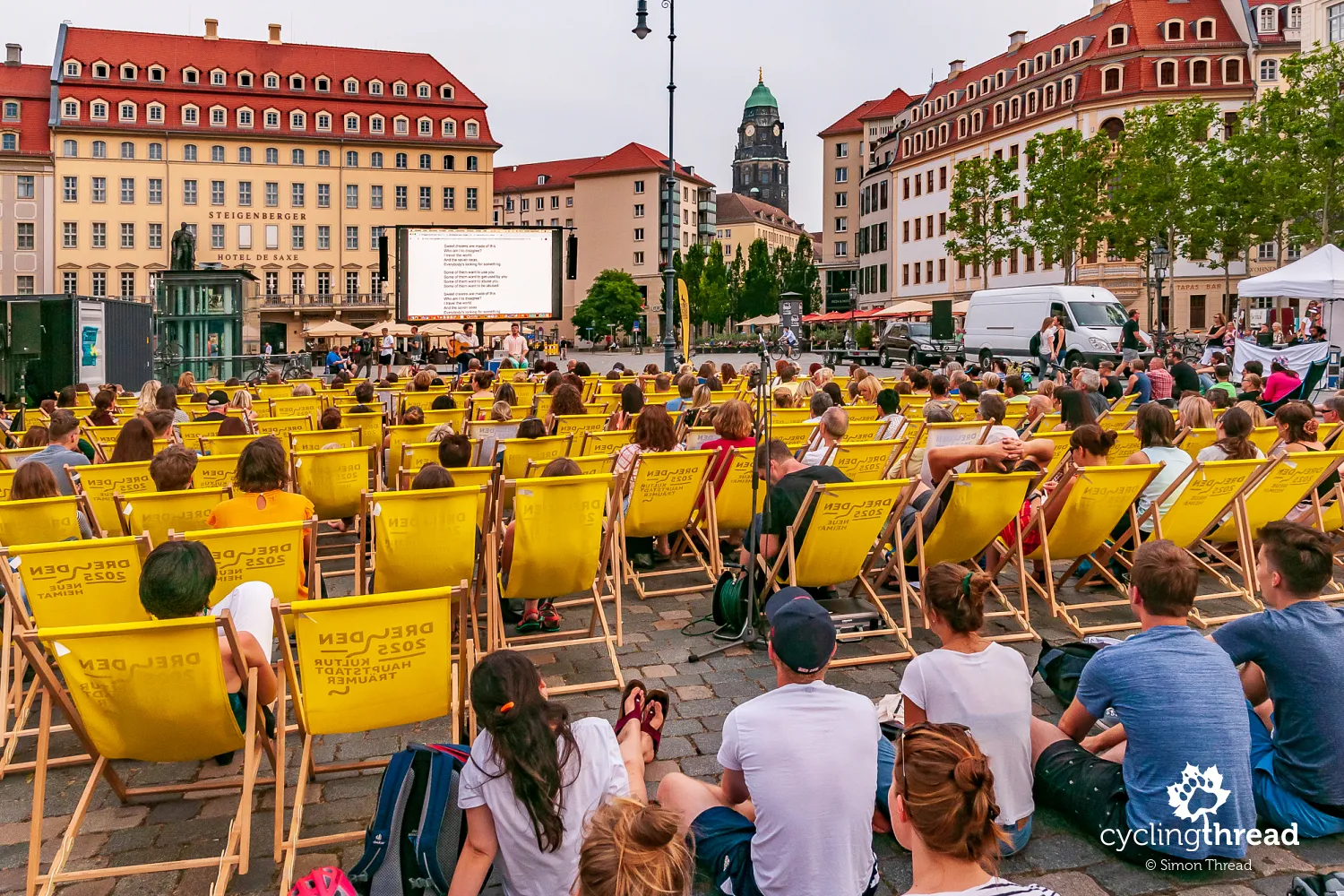
How to travel with a bike on the train?
Before setting off on our summer journey through Europe, we were a bit anxious about transporting our bikes on trains of different types and with different operators across various countries. Luckily, getting to Saxony went off without a hitch. First, we once again used the excellent Gdynia–Berlin connection run jointly by Polish Intercity and Deutsche Bahn. Then we hopped on the fast international train from Hamburg to Prague via Dresden, operated by Czech Railways (České dráhy). Both trains required advance seat reservations for us and our bikes. In the first one, we had to hang our bikes on hooks, while in the second, it was enough to simply place the bikes and trailer in the luggage compartment. You can find more tips and real-life experiences in our bike on train guide.
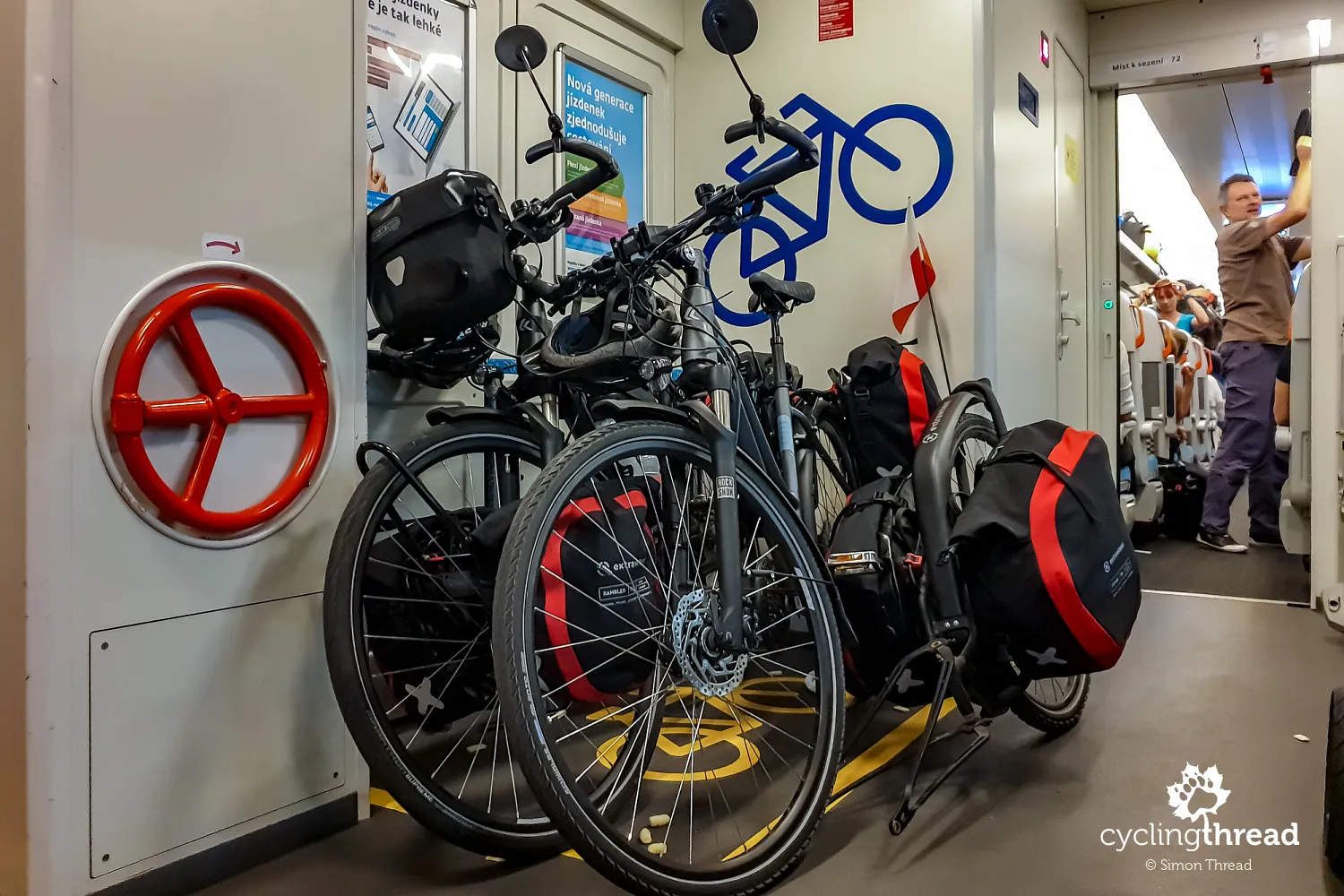
Next: Austria, South Tyrol, and Friesland
We couldn't have picked a better start to our month-long European tour. Even though our stay in Dresden was short, we left with plenty of impressions and emotions - from the pure joy of cycling to all the wonderful cultural discoveries. All those experiences confirmed what we already suspected: a few days in Saxony's capital is an excellent choice for any active traveler. After Saxony, it was time for Austria and the Austrian Alps, which we were really looking forward to. Then came always-beautiful South Tyrol in Italy. And finally, the cycling paradise of the Netherlands - Friesland and Groningen by the Wadden Sea. You can already read about all of it on Cycling Thread :-)
Back to top


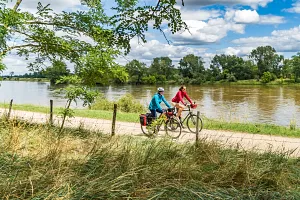
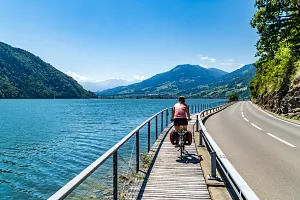
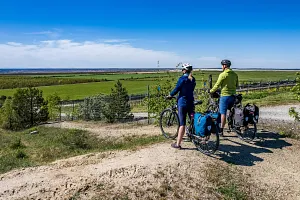
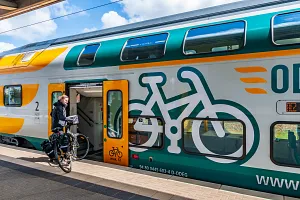
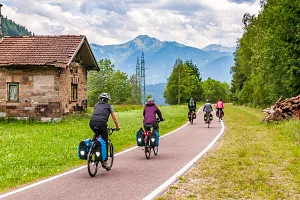
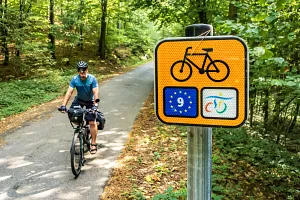

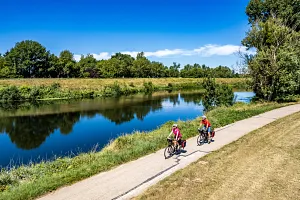
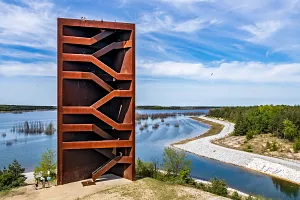
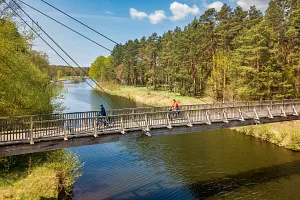

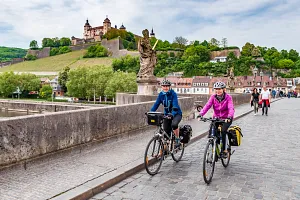

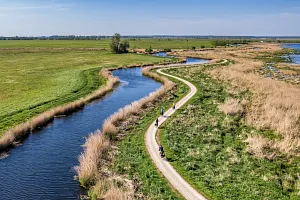
Your Comments
Add new comment